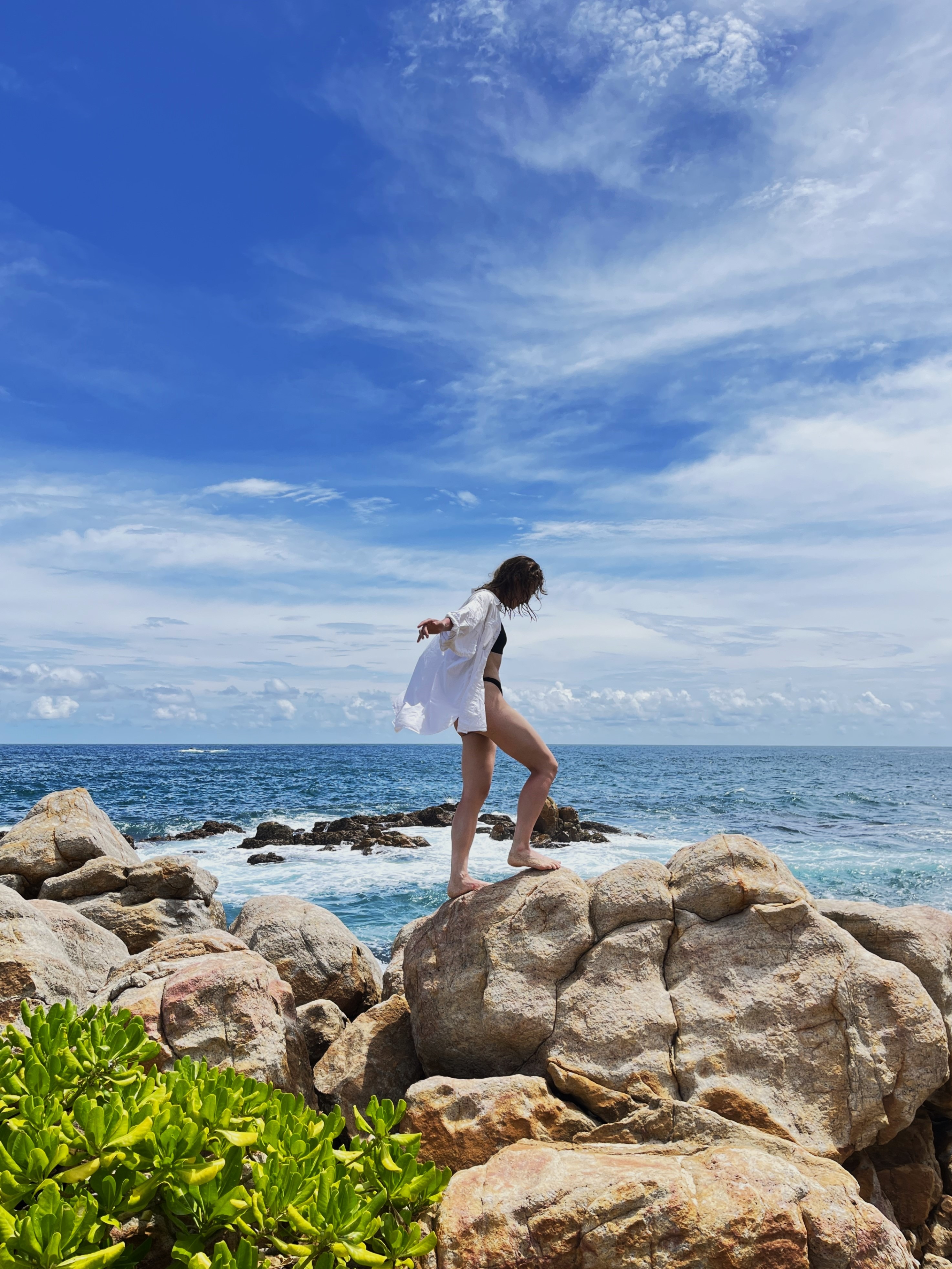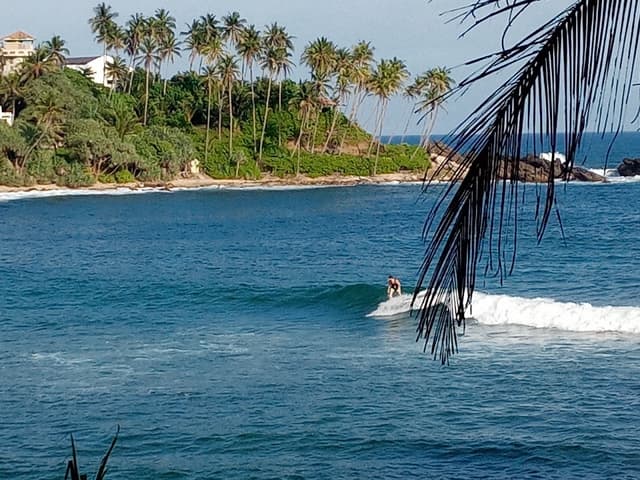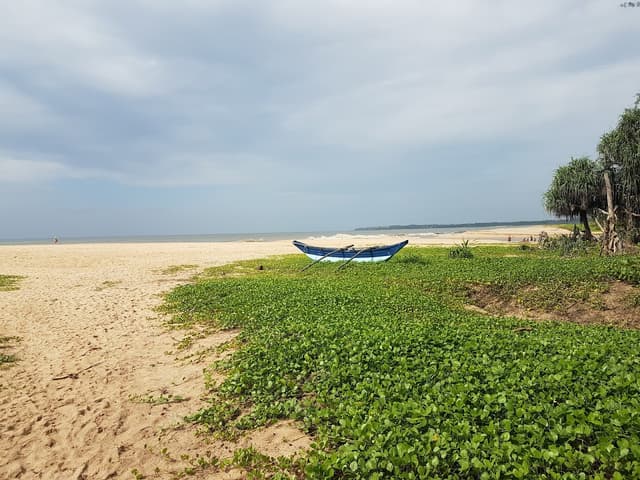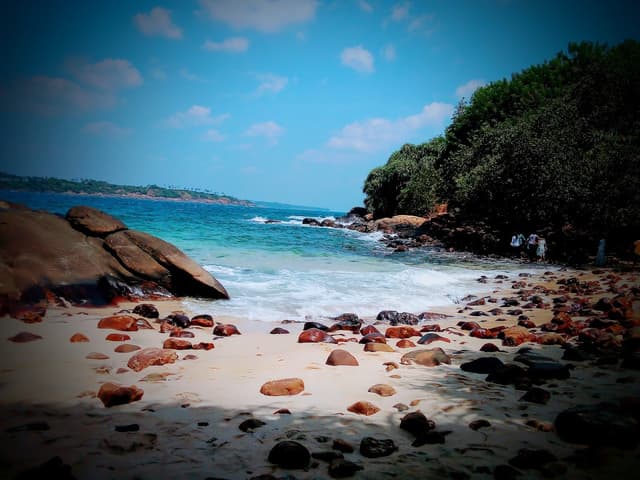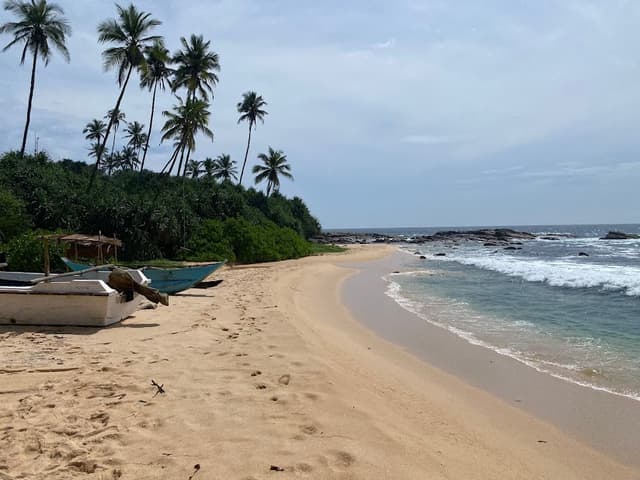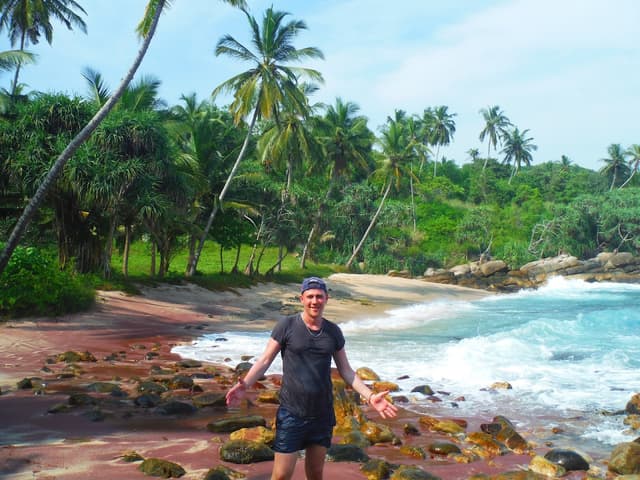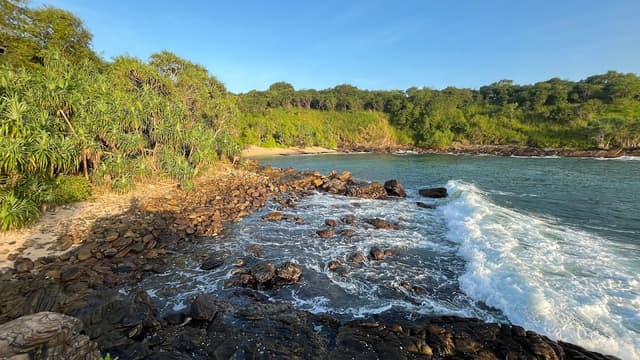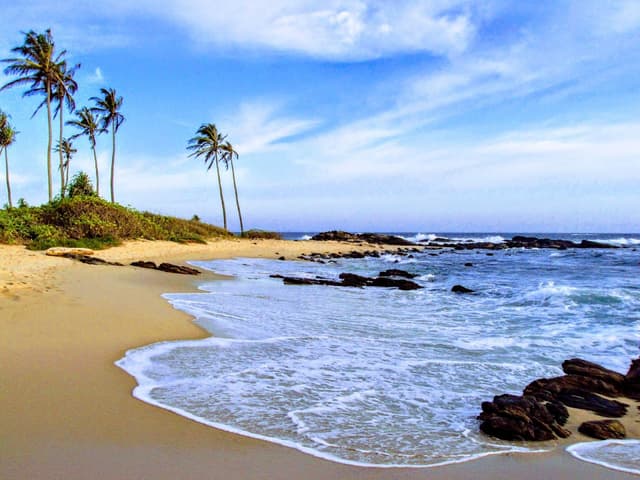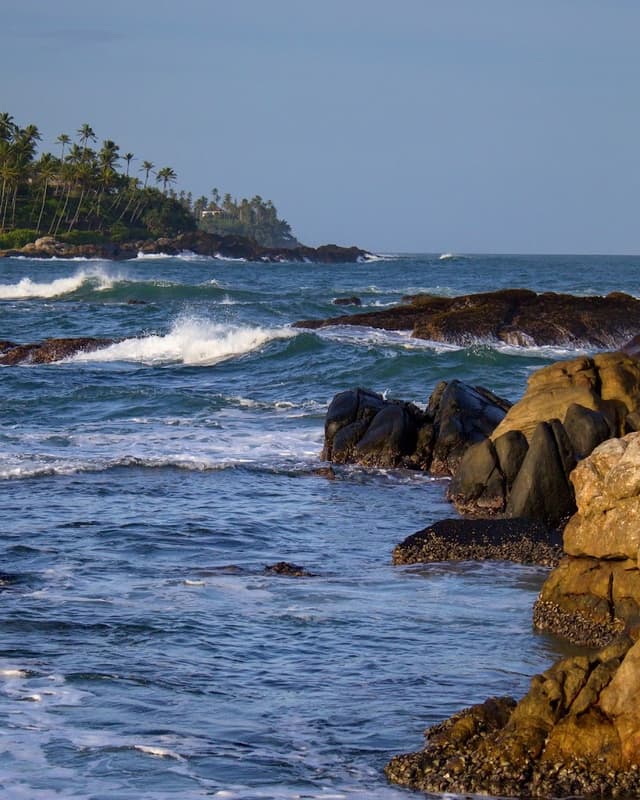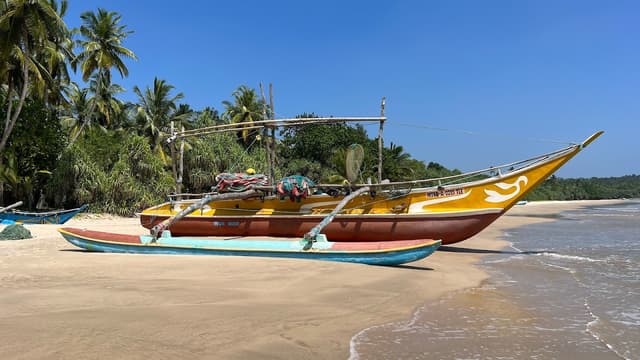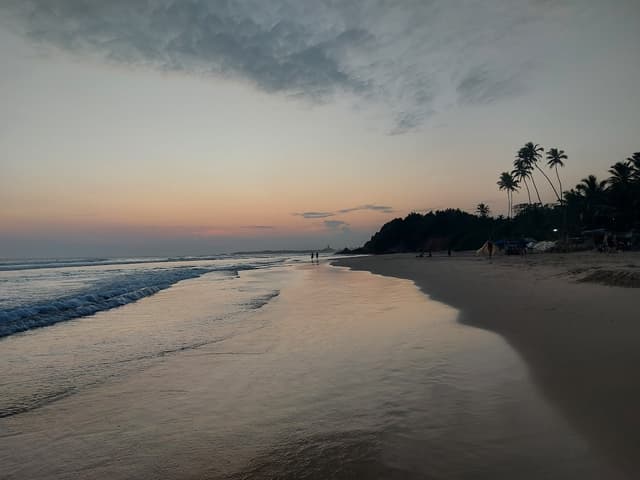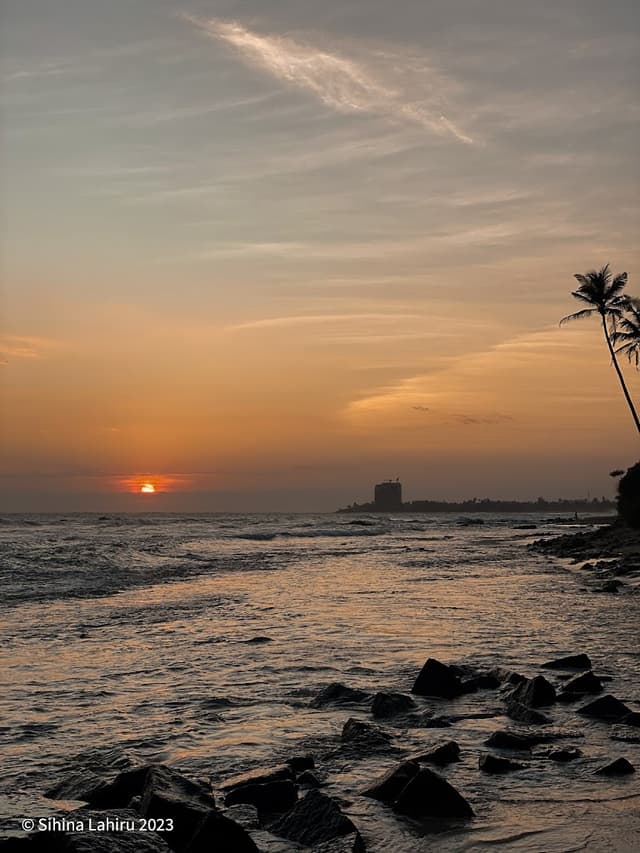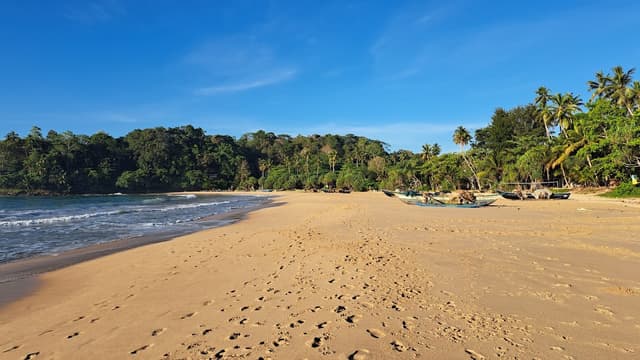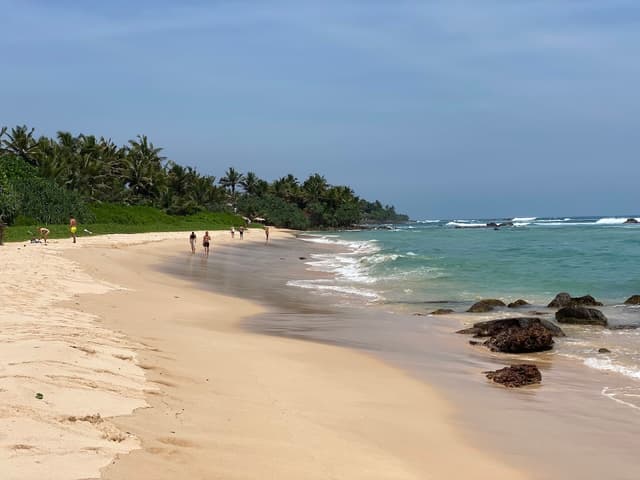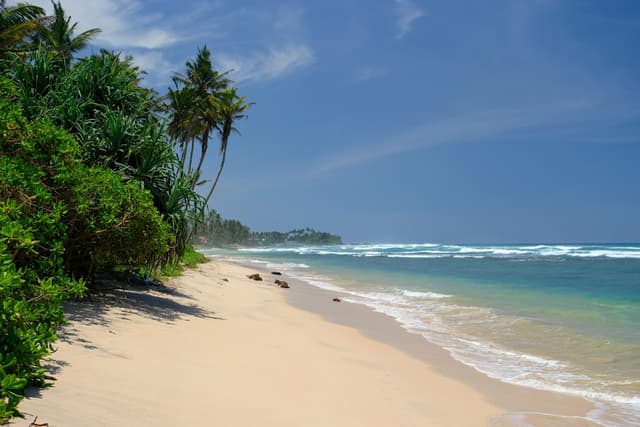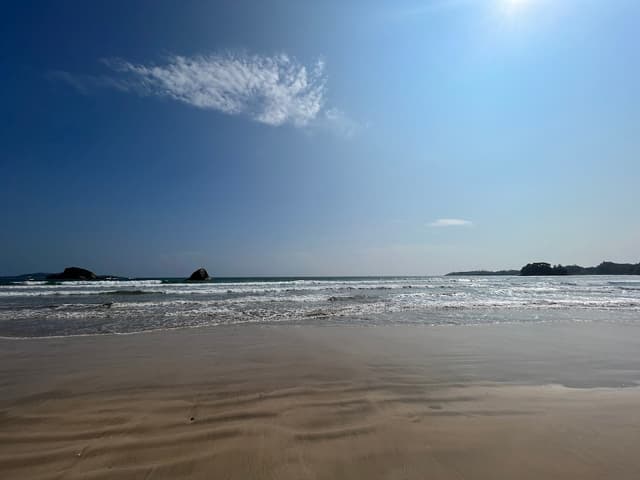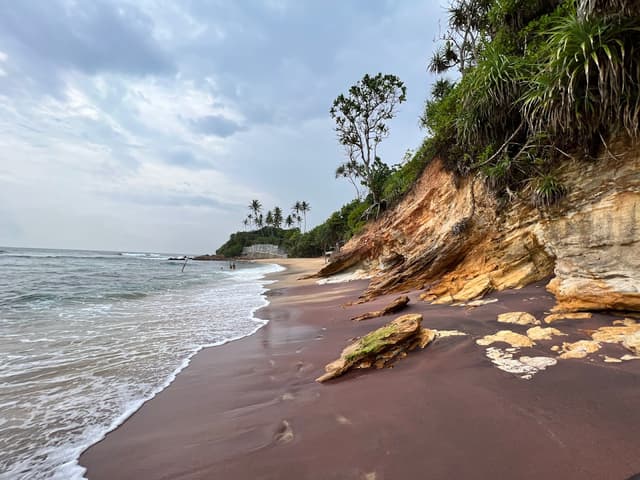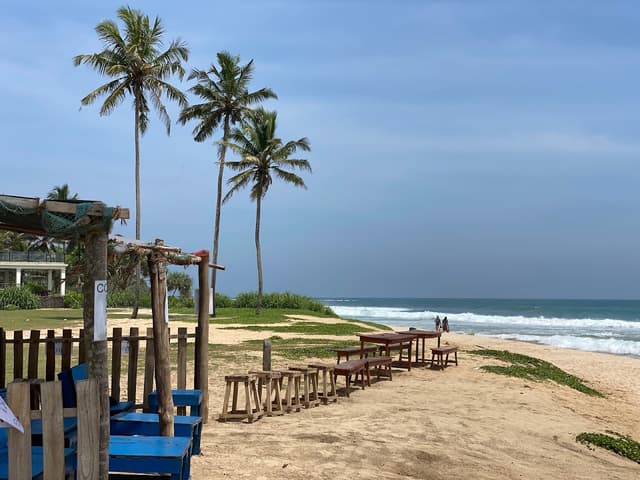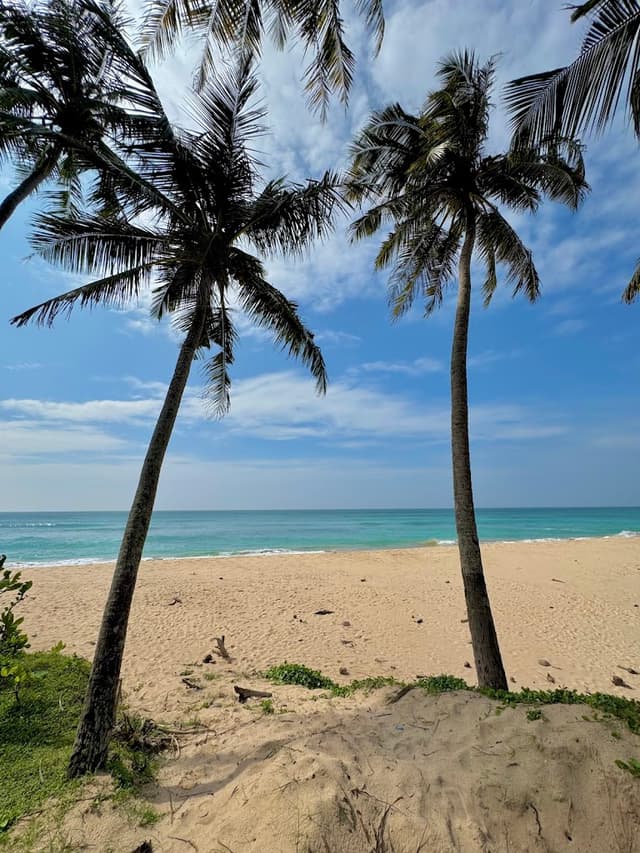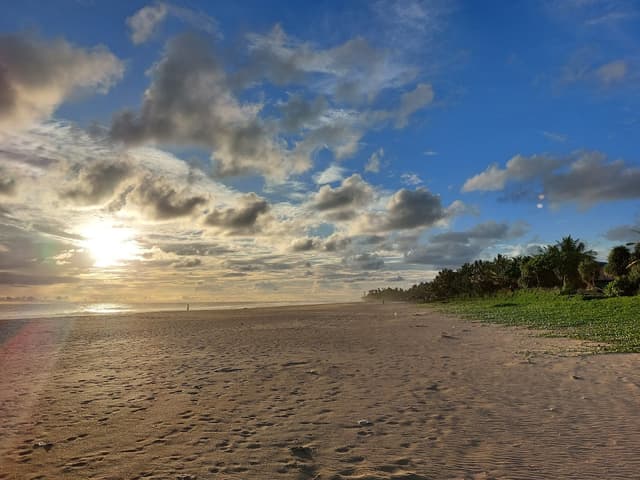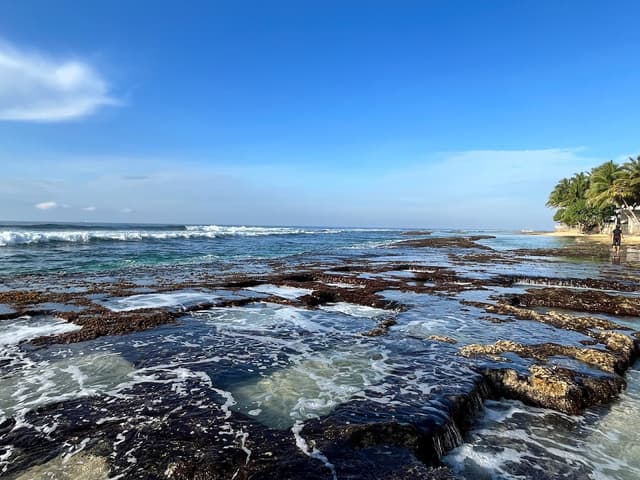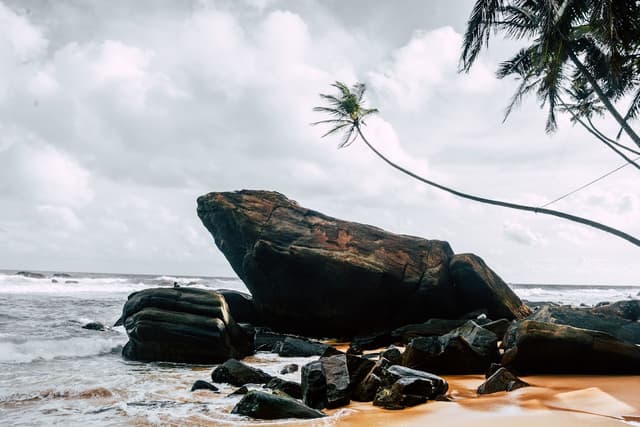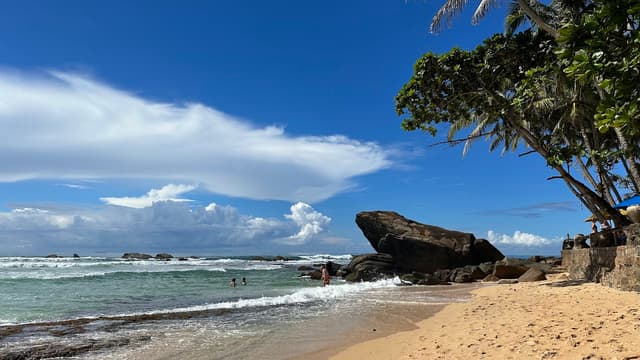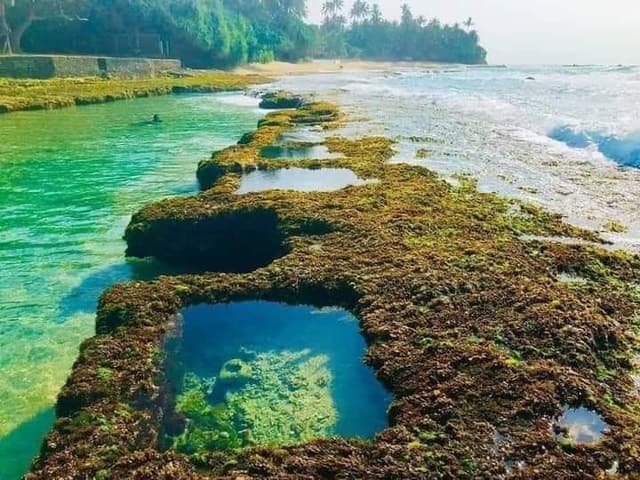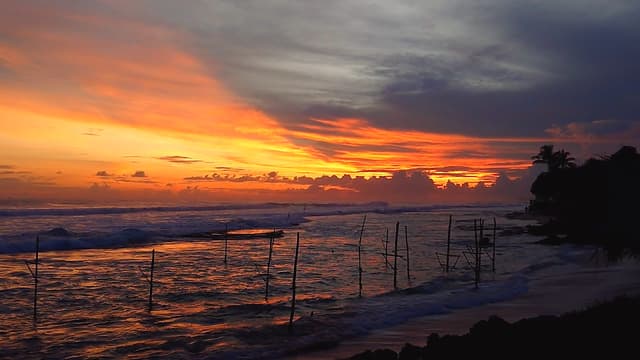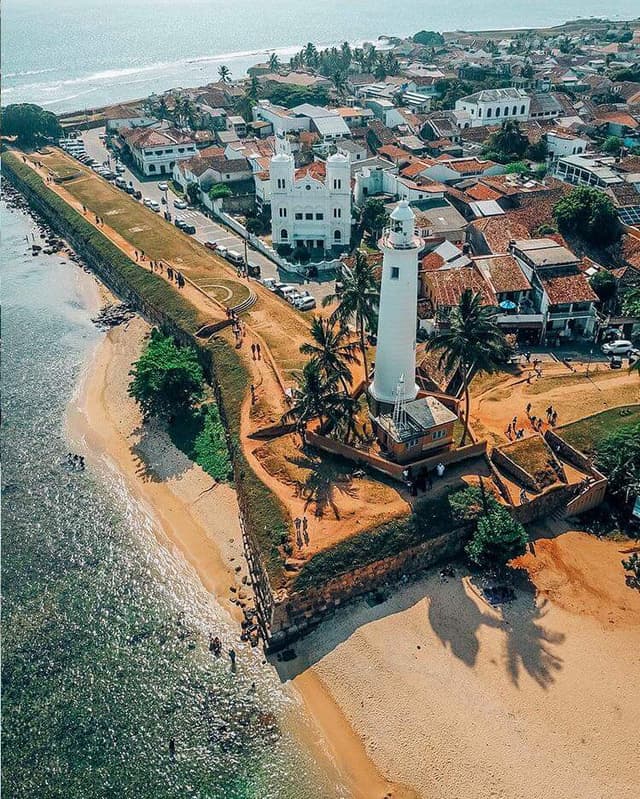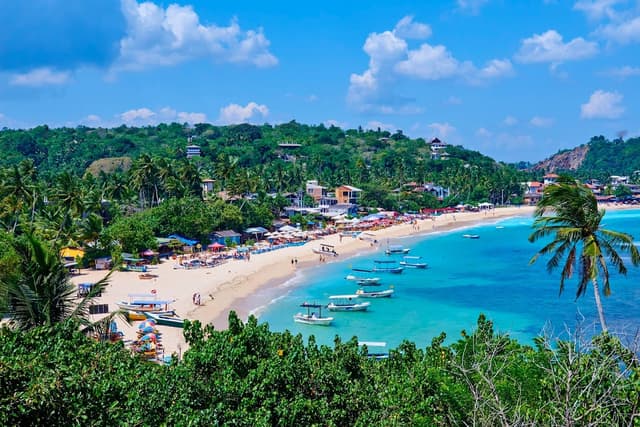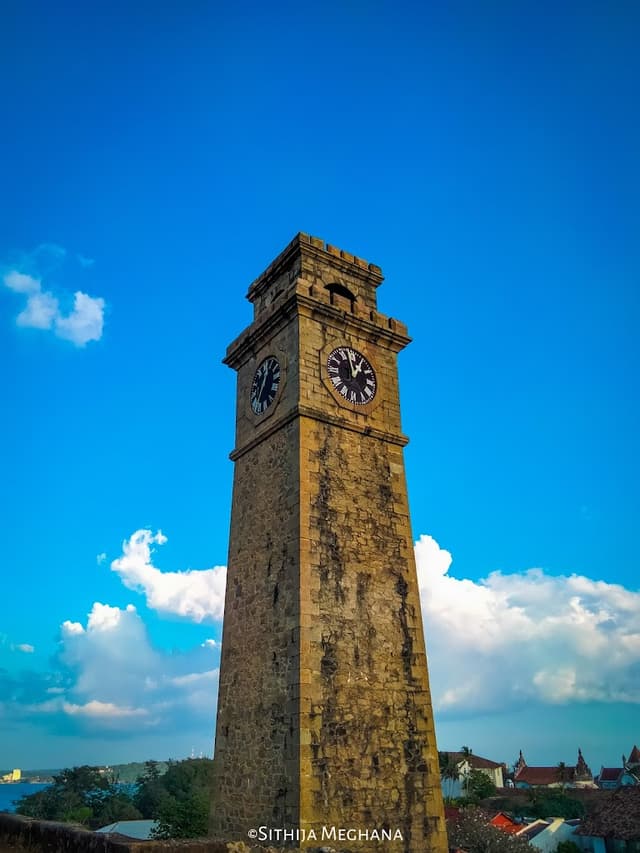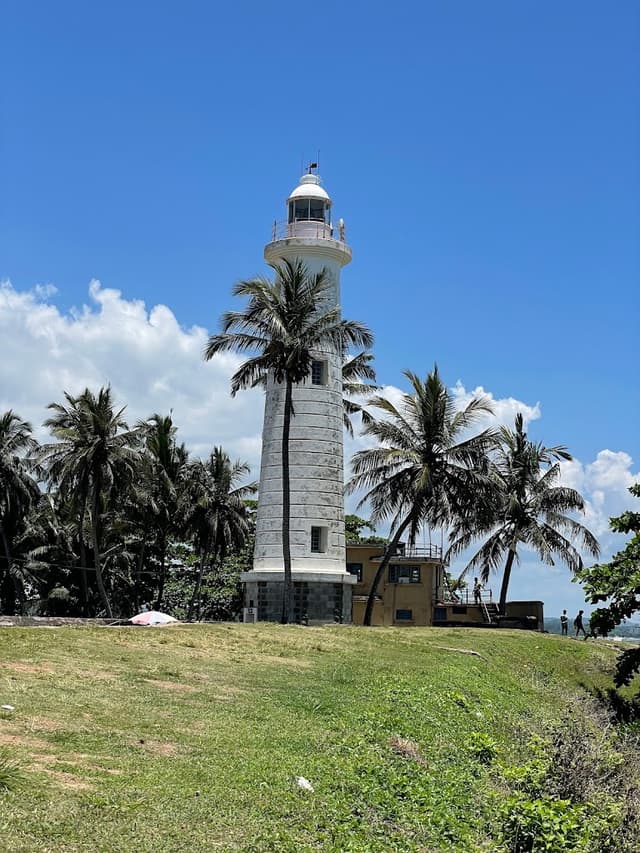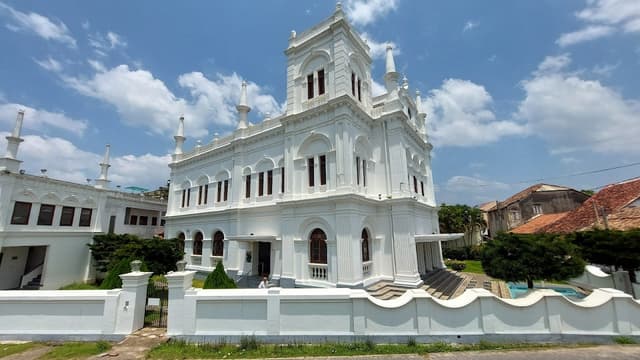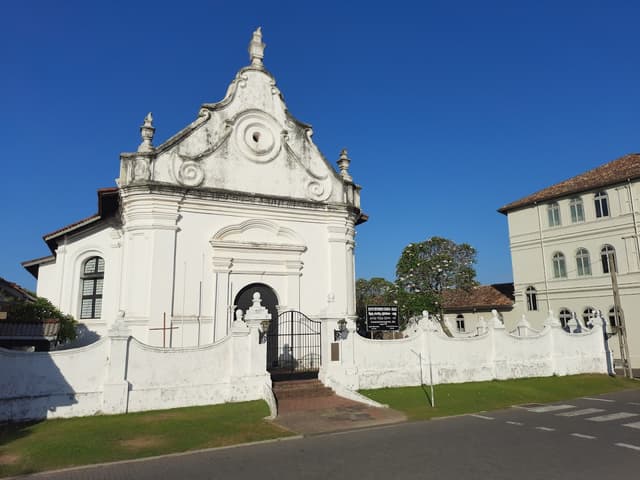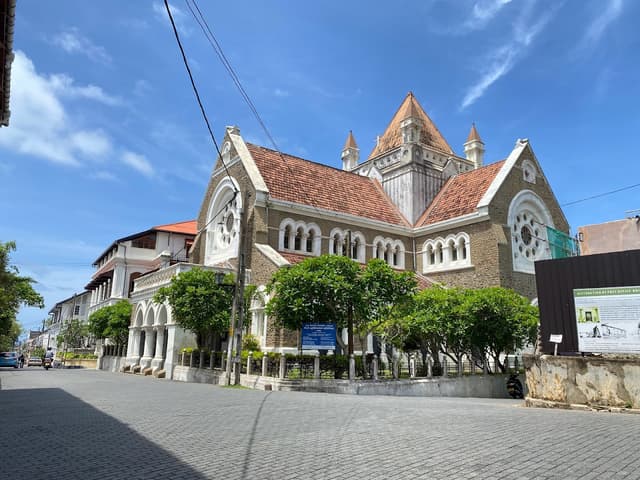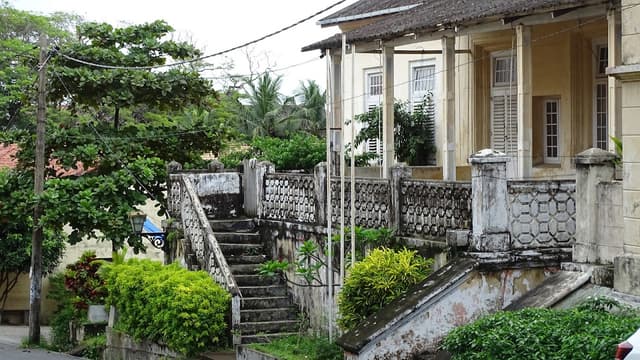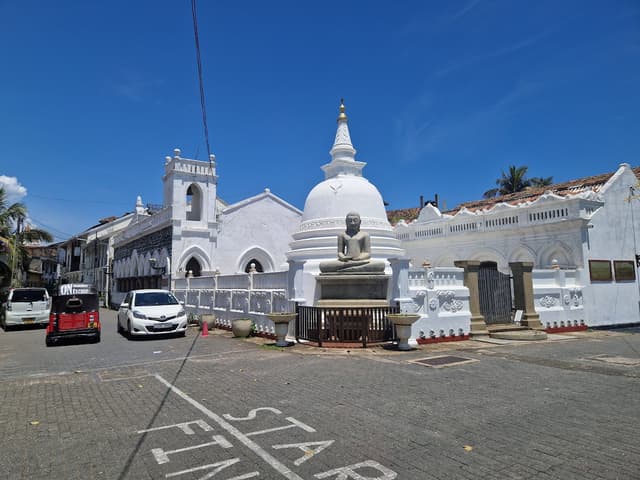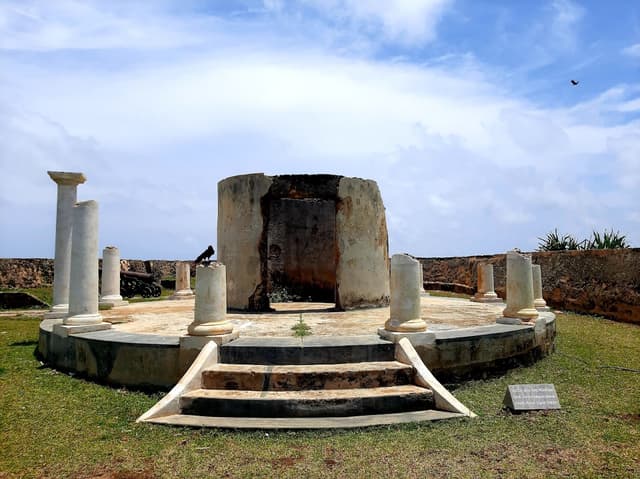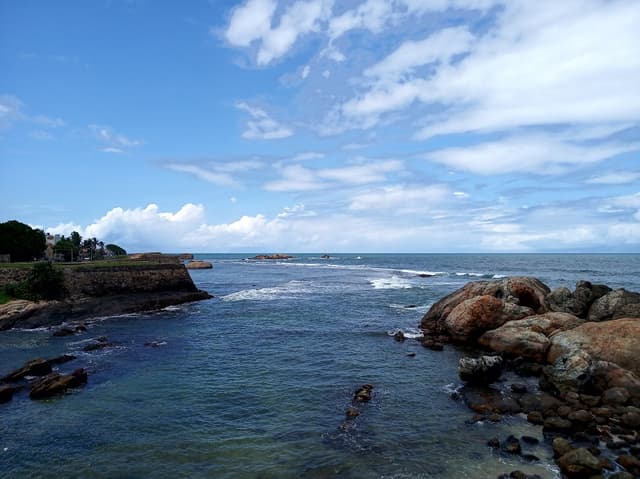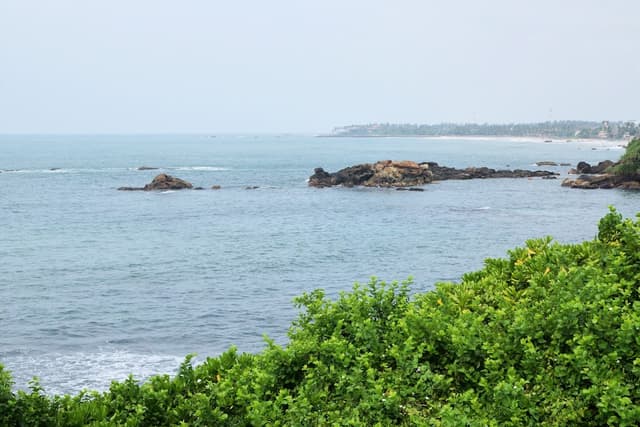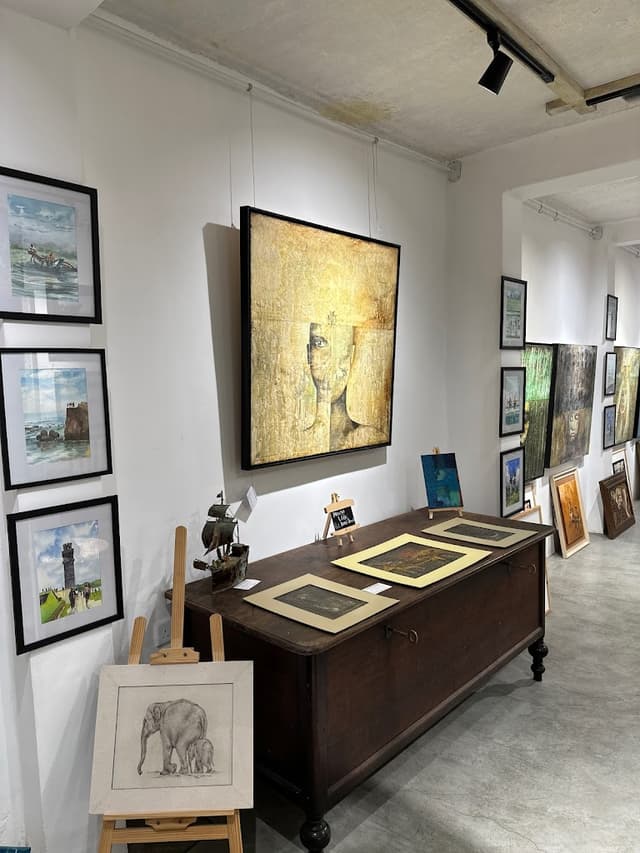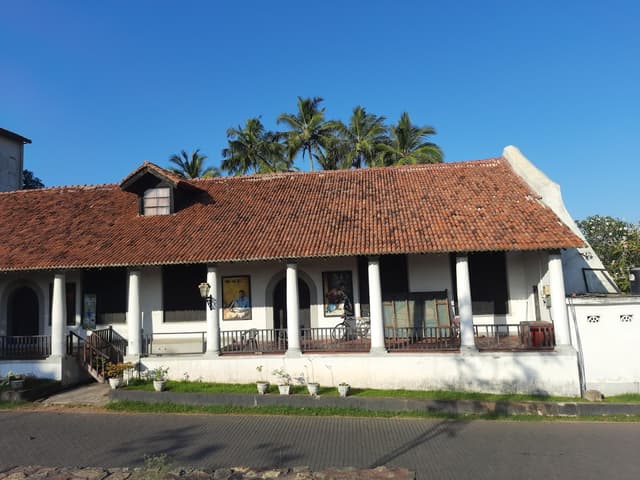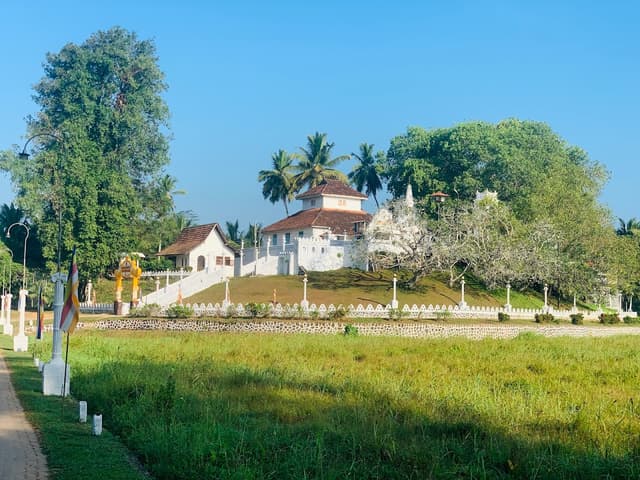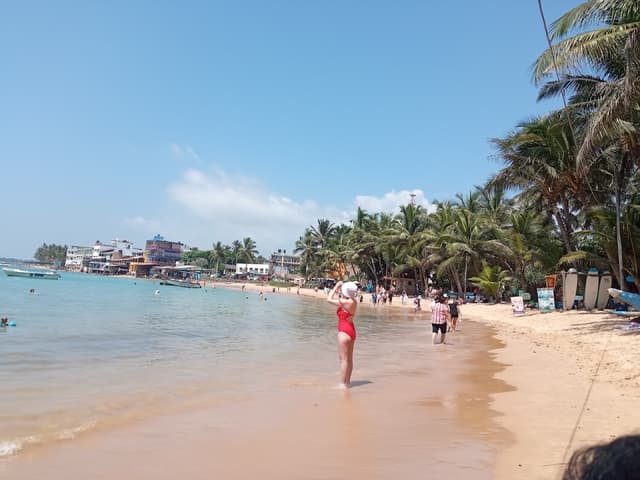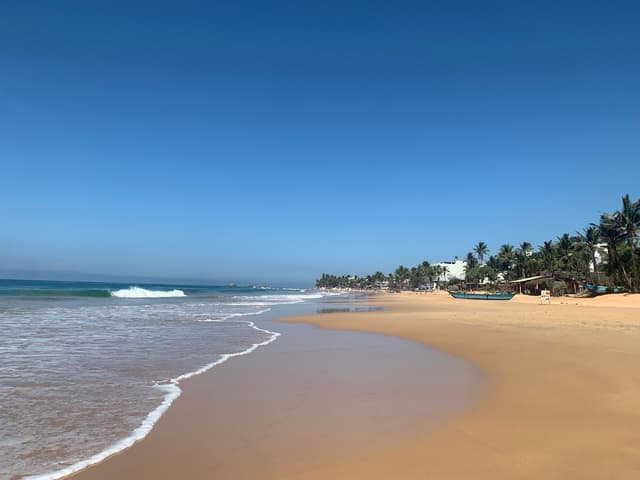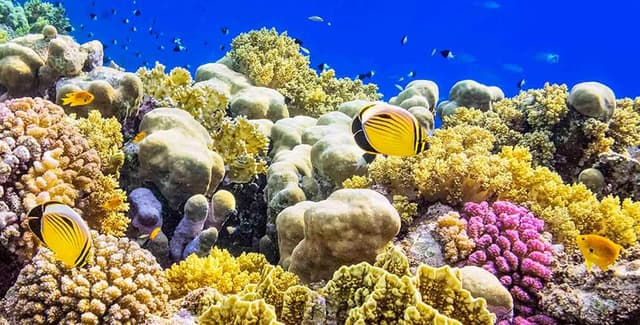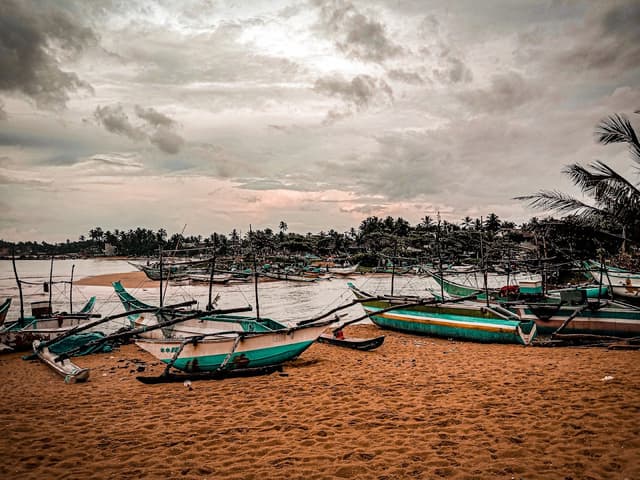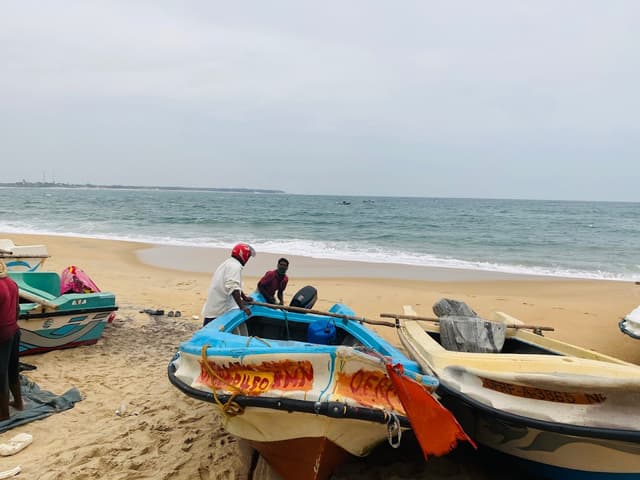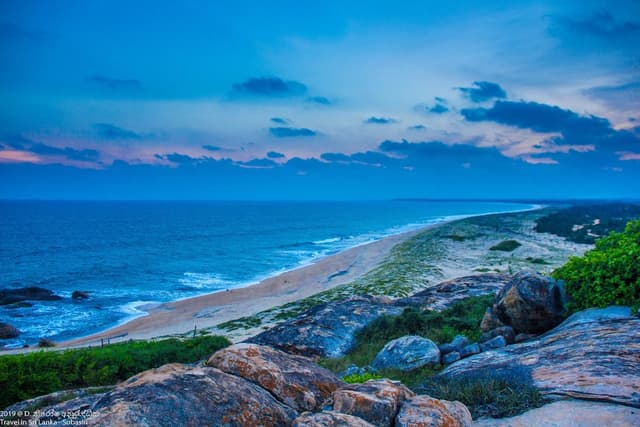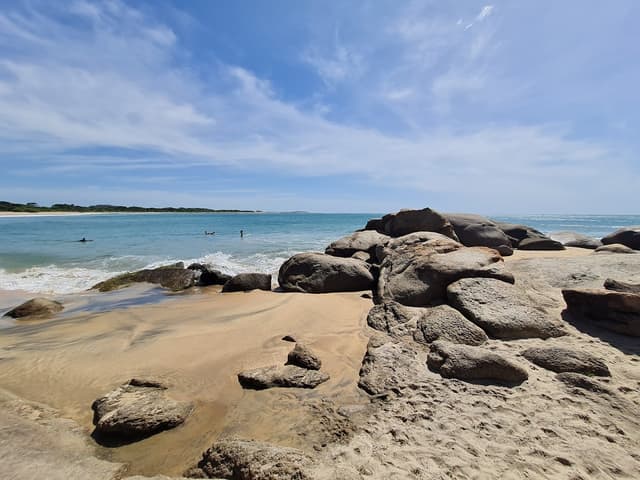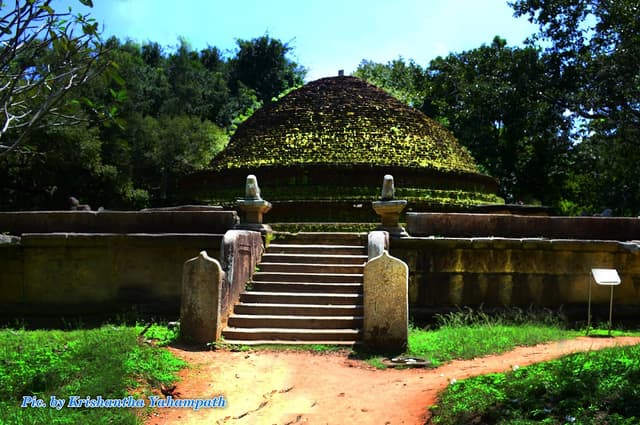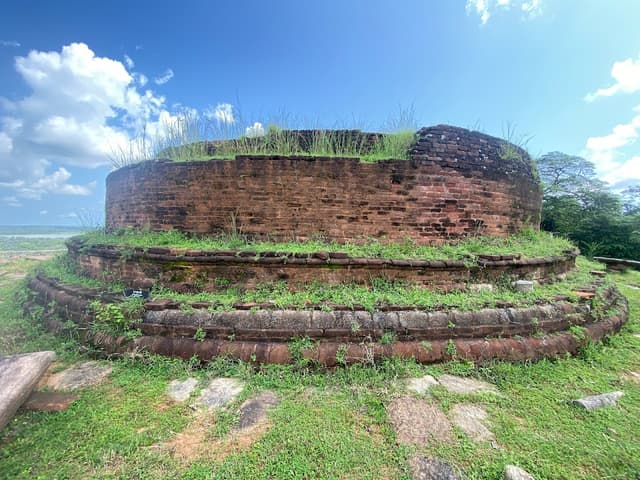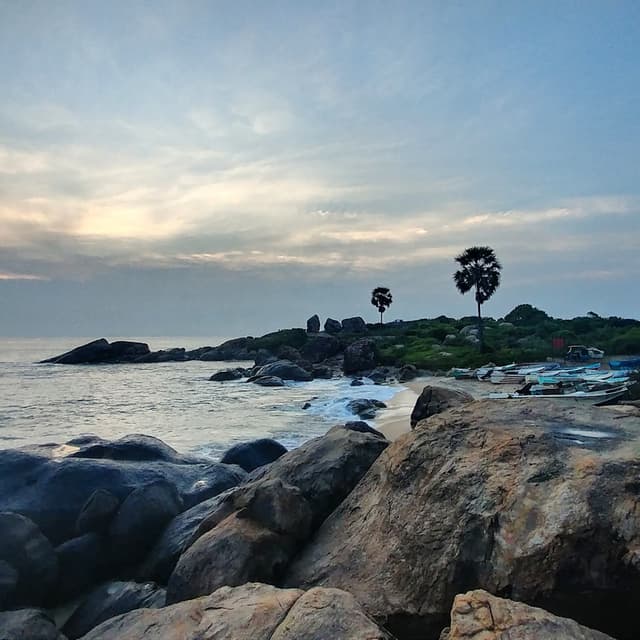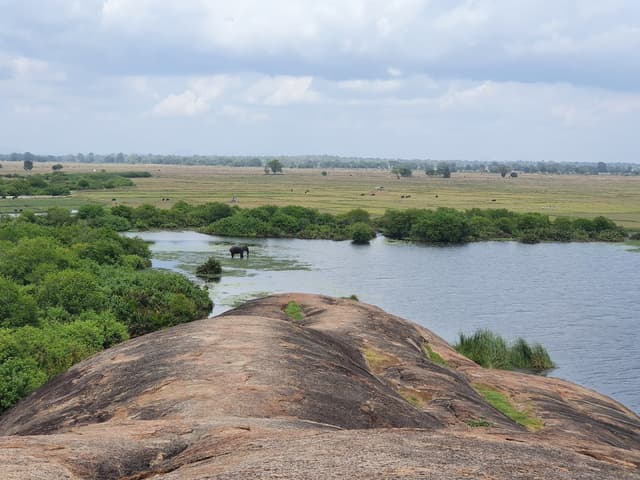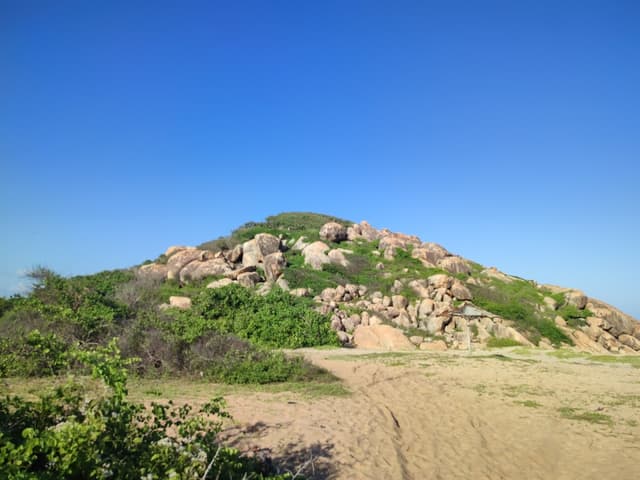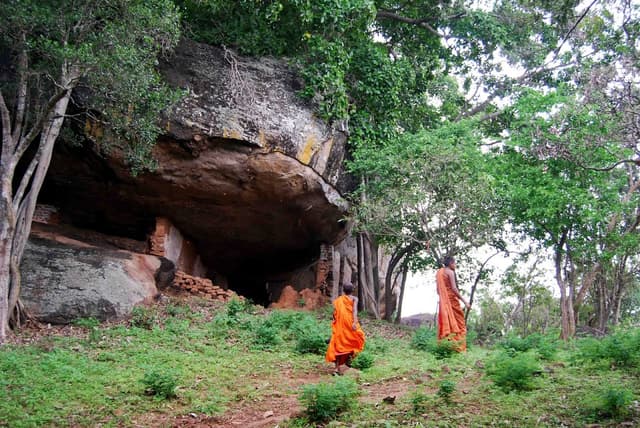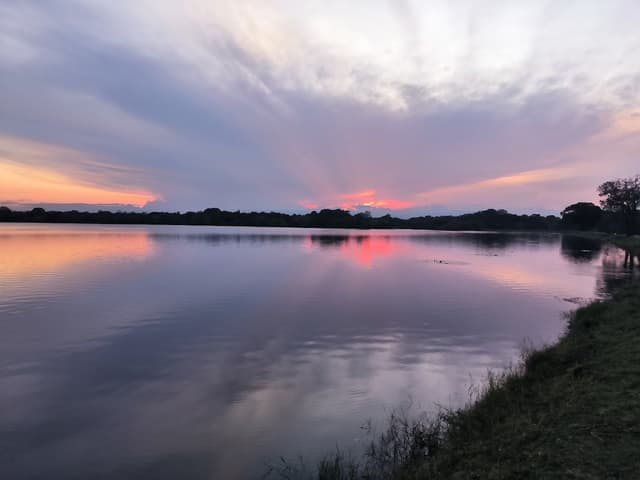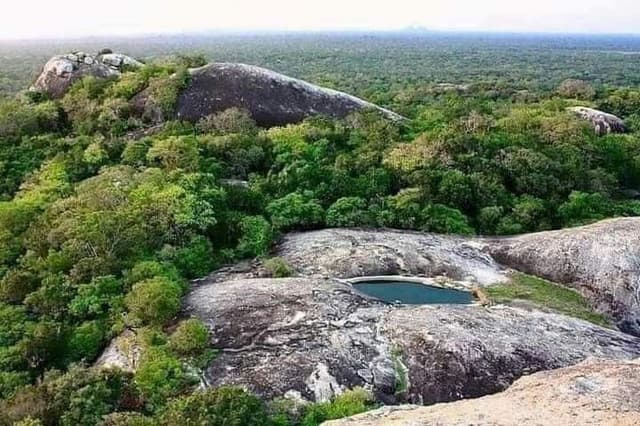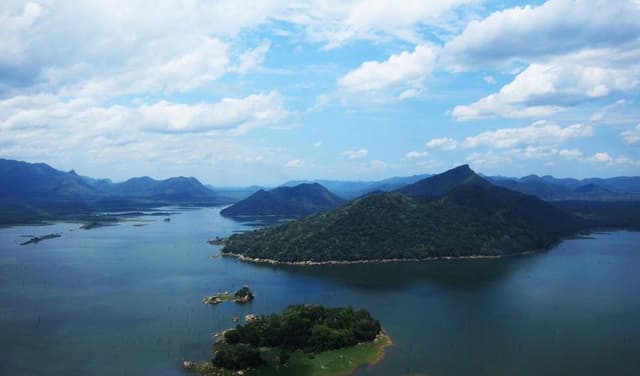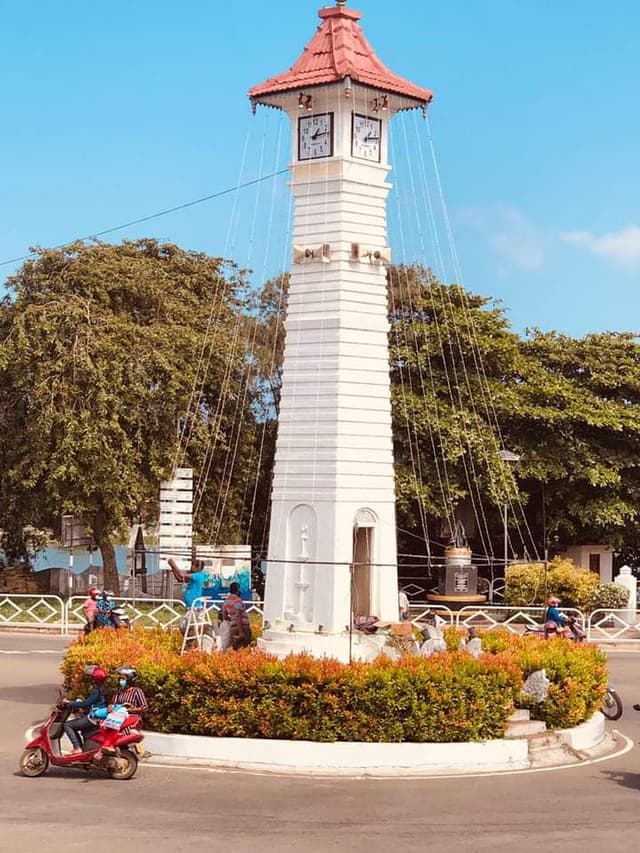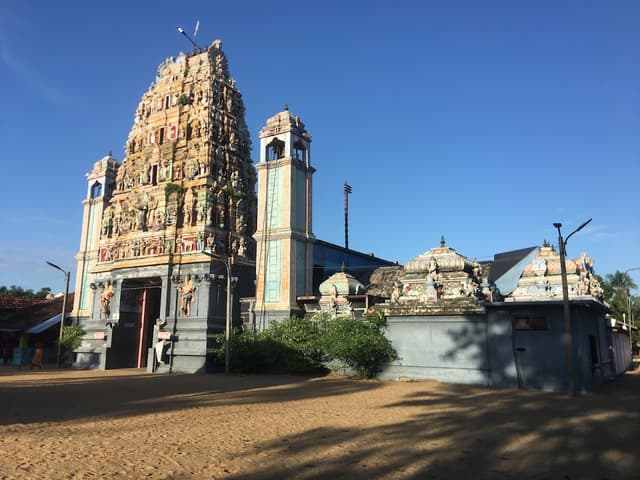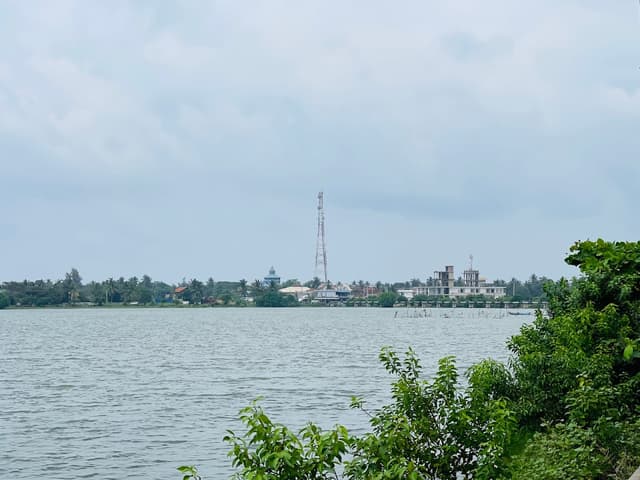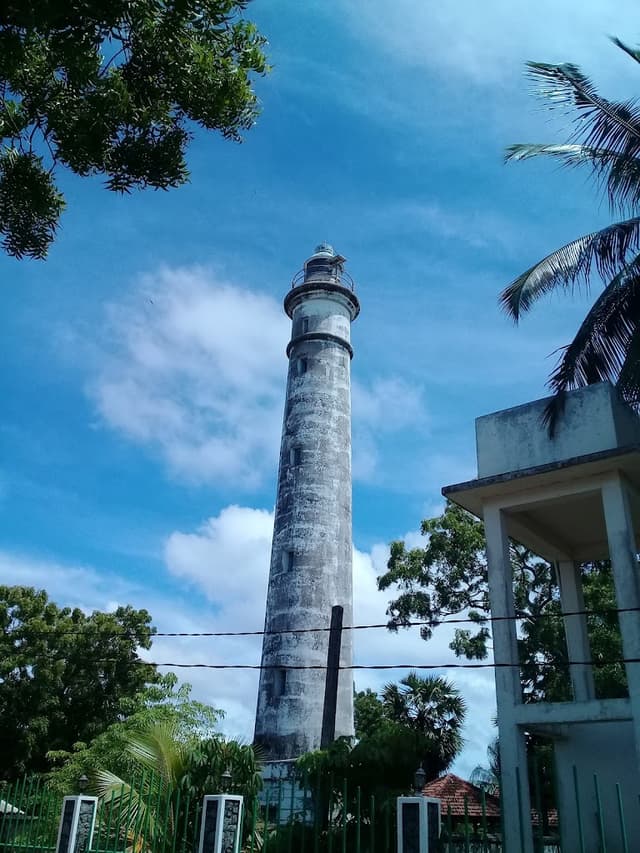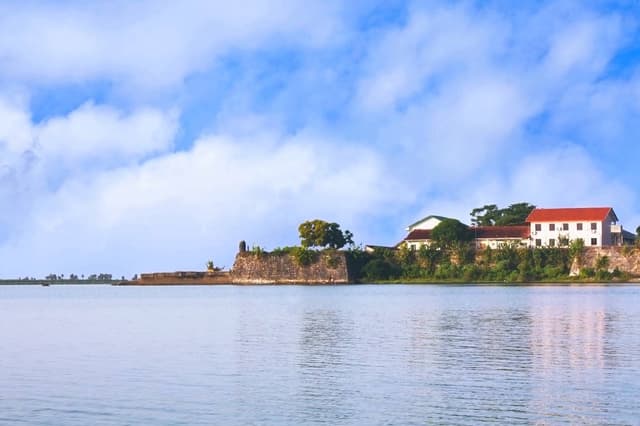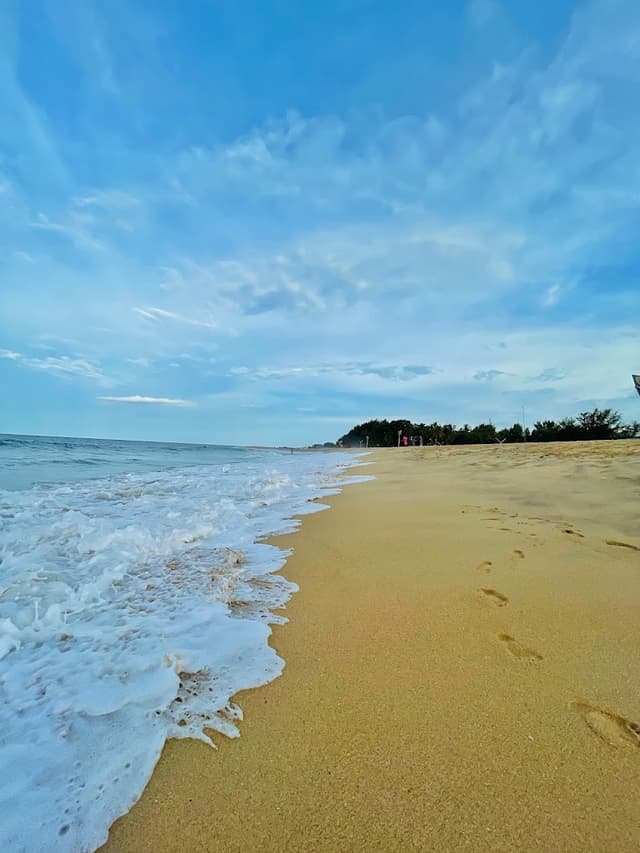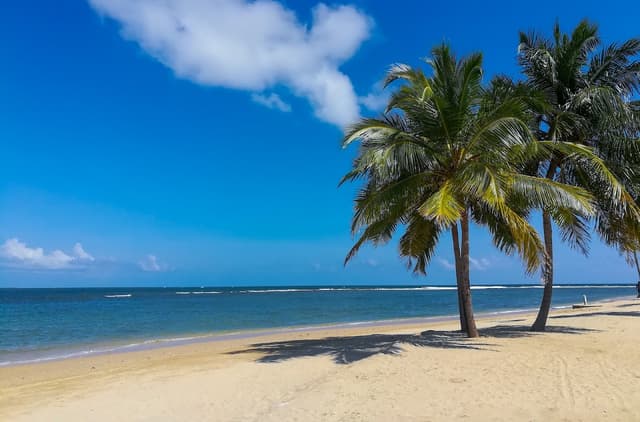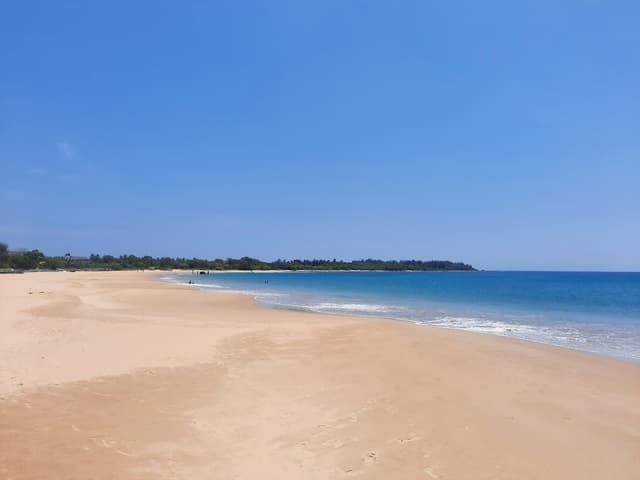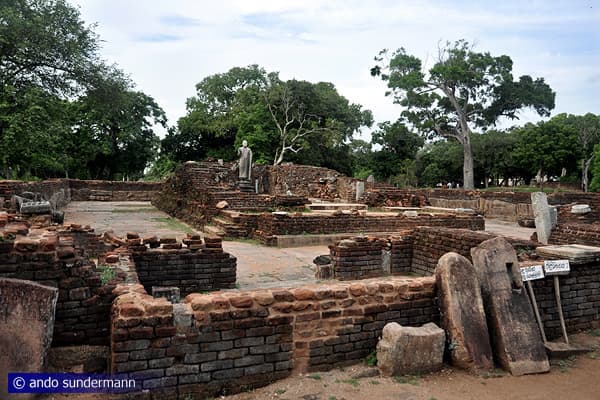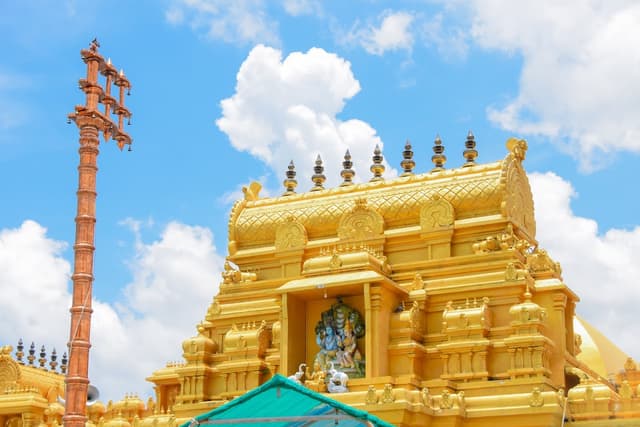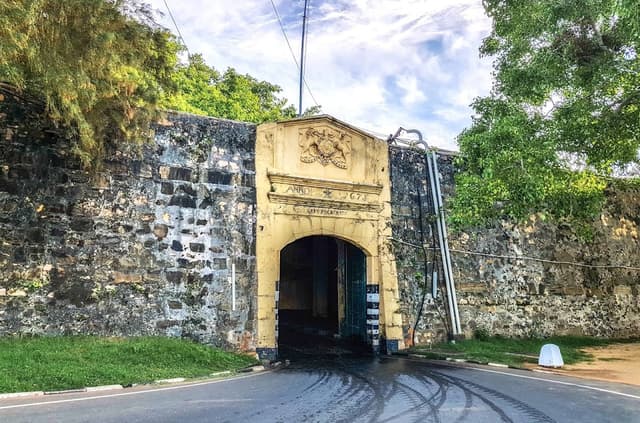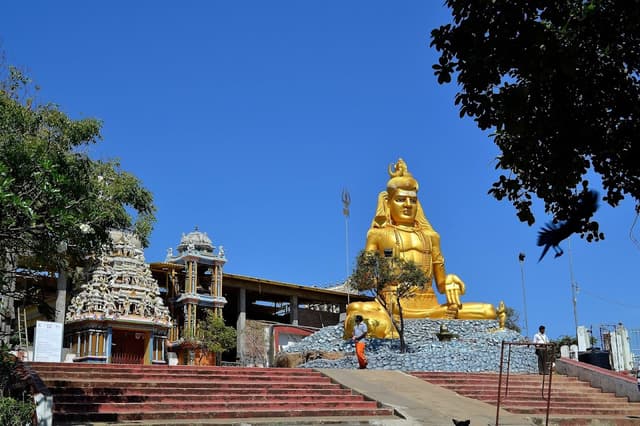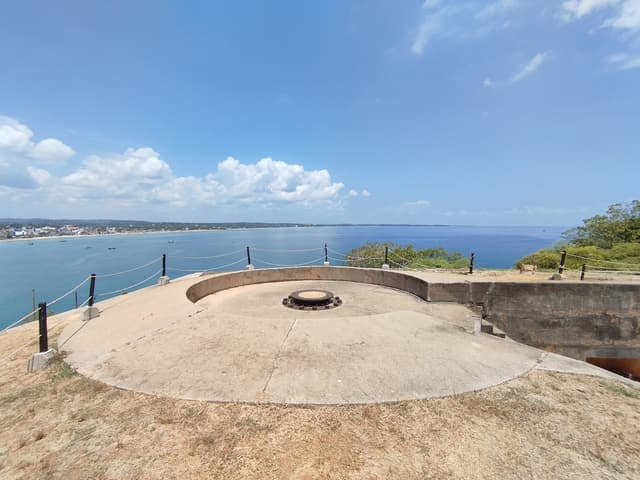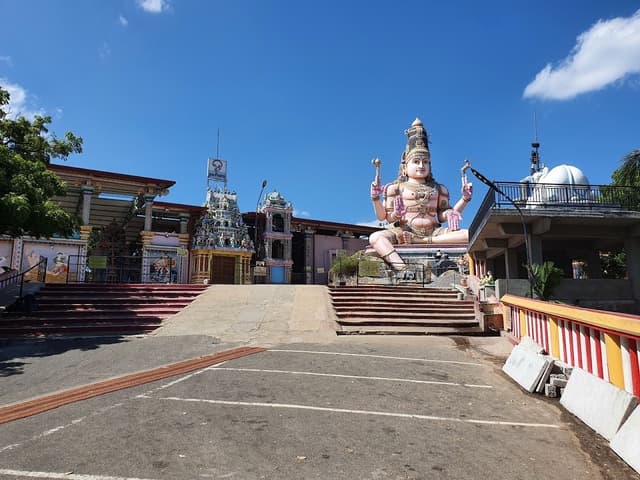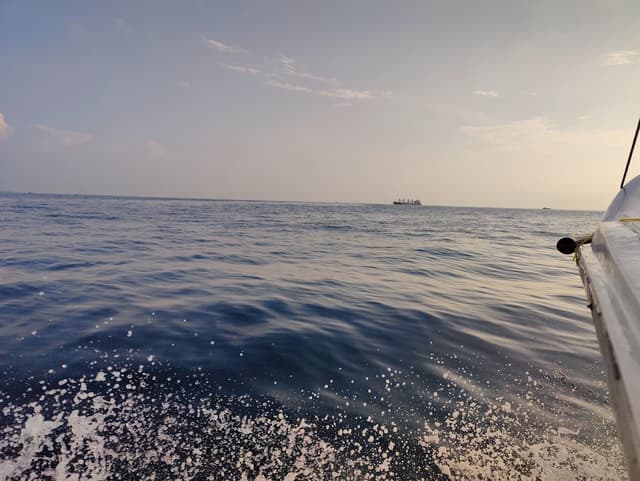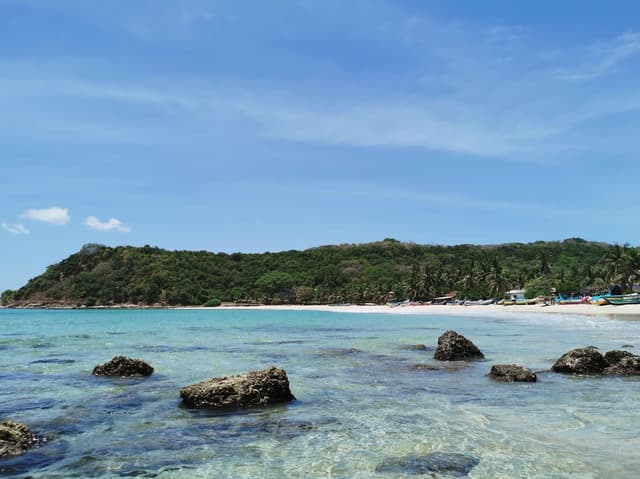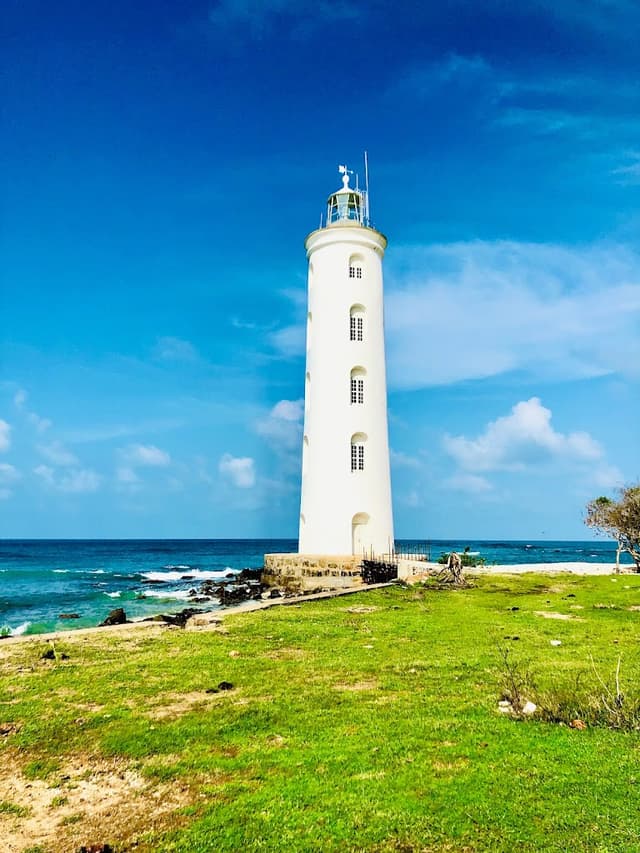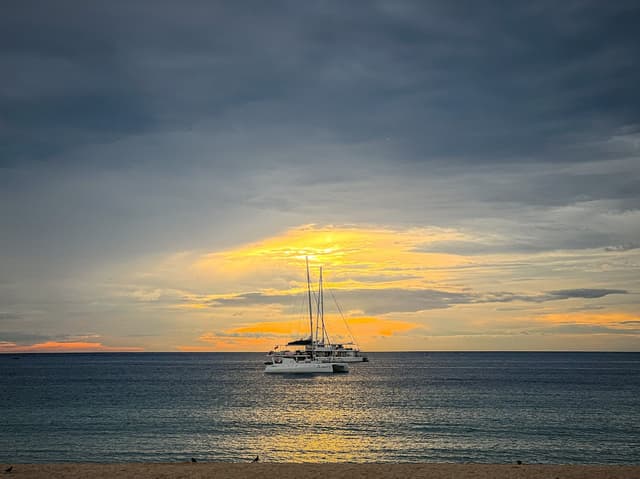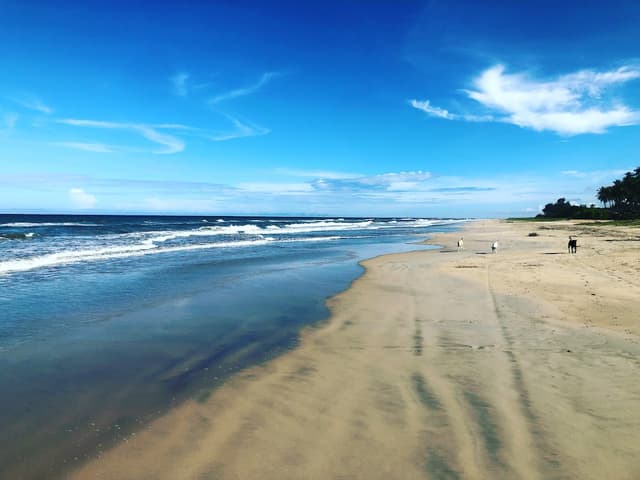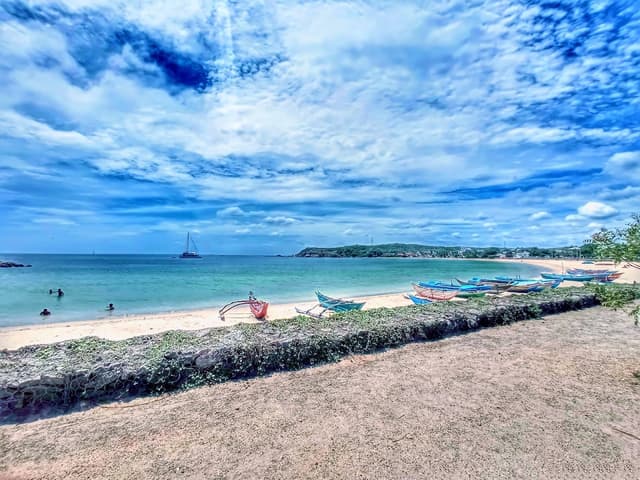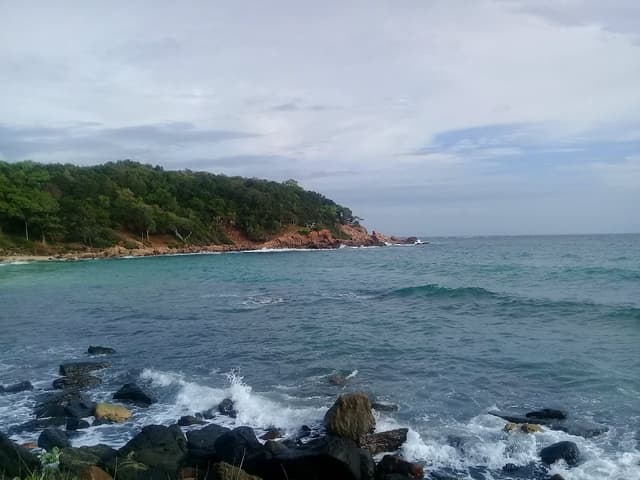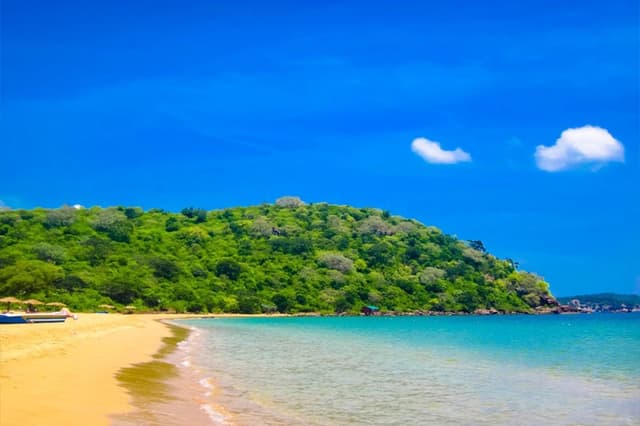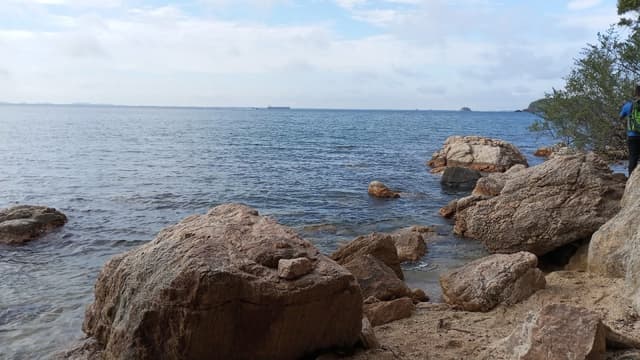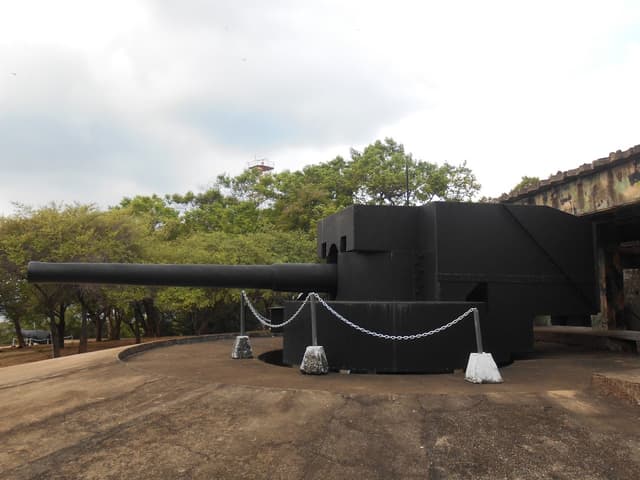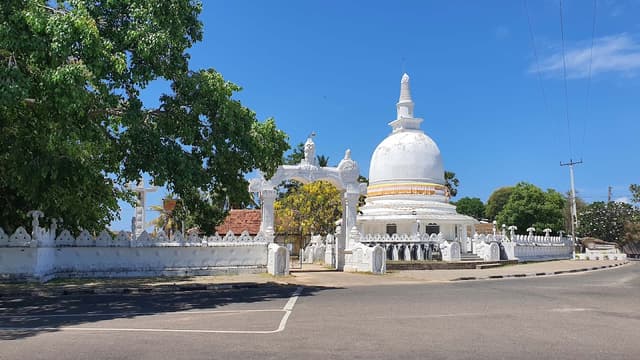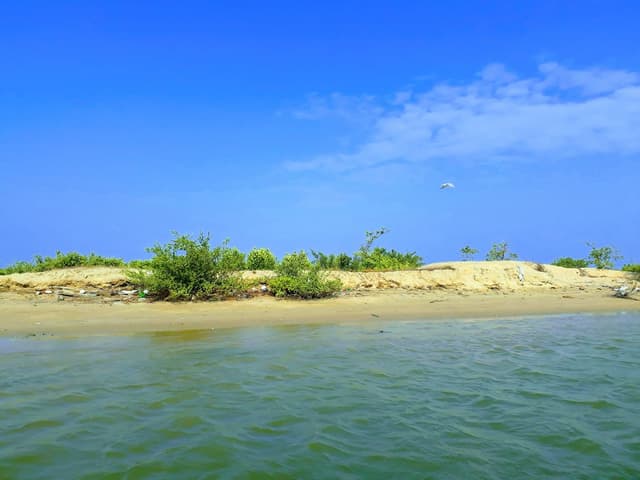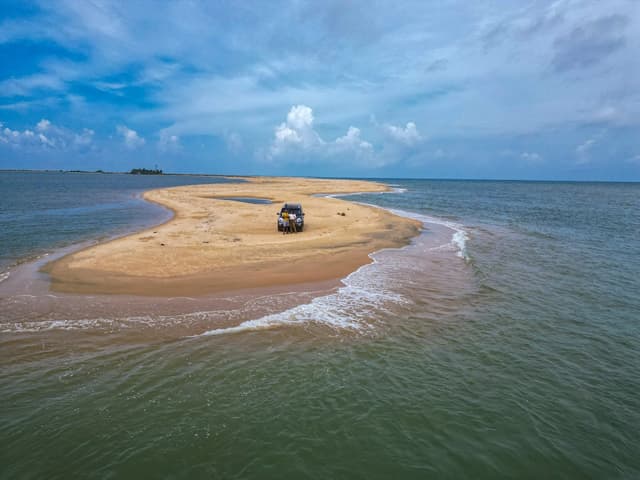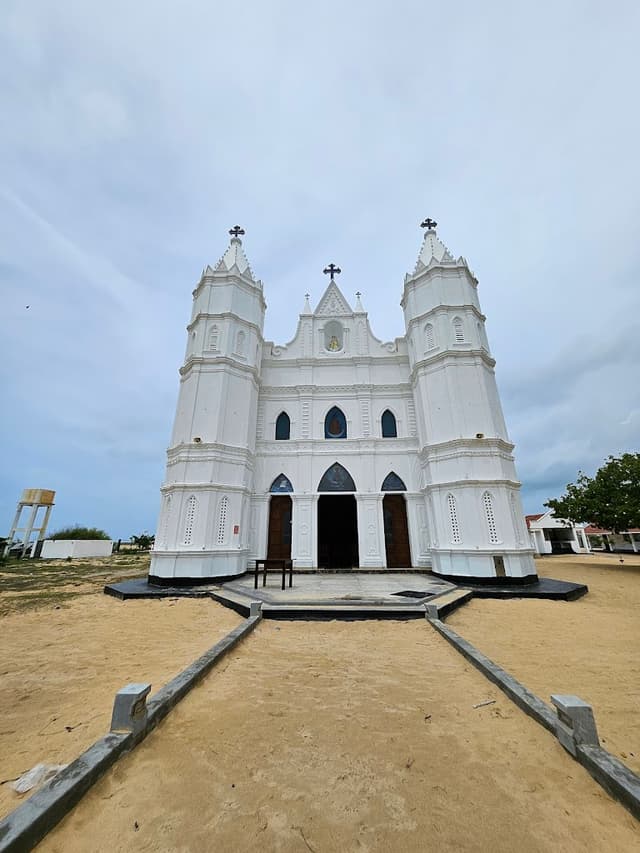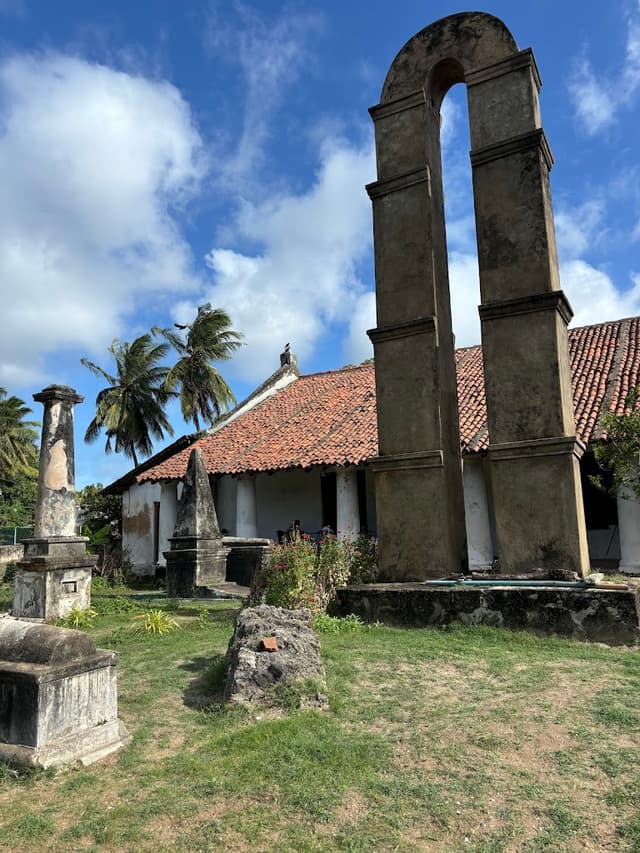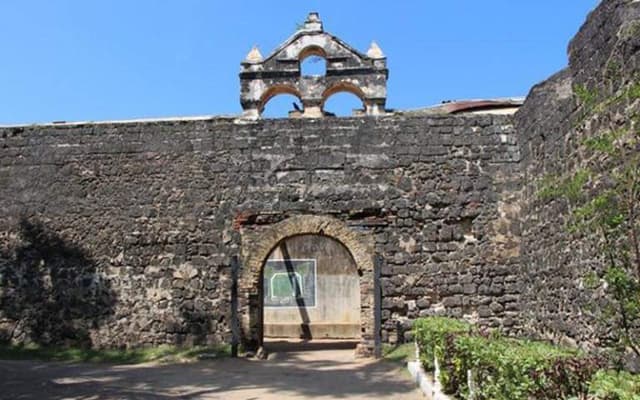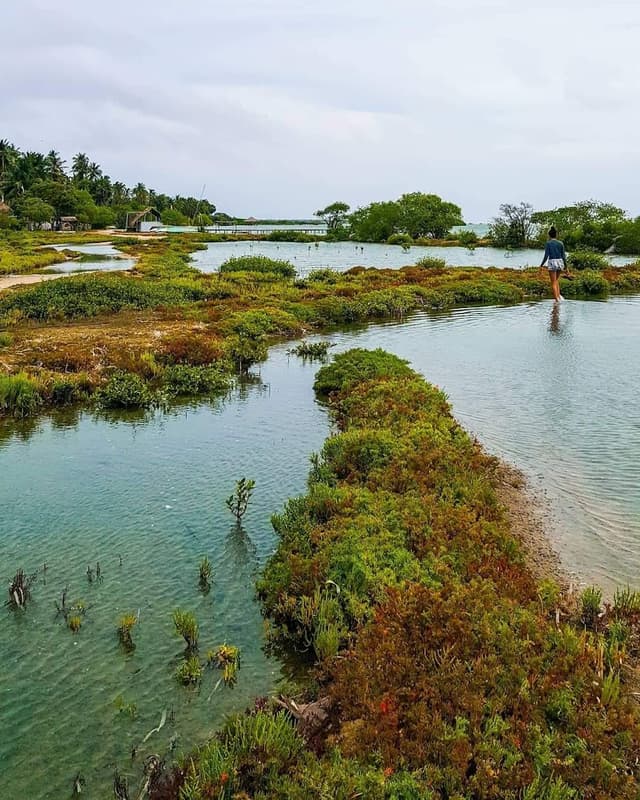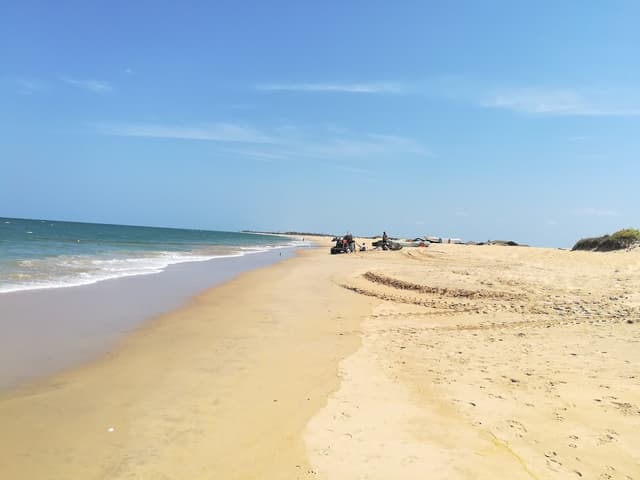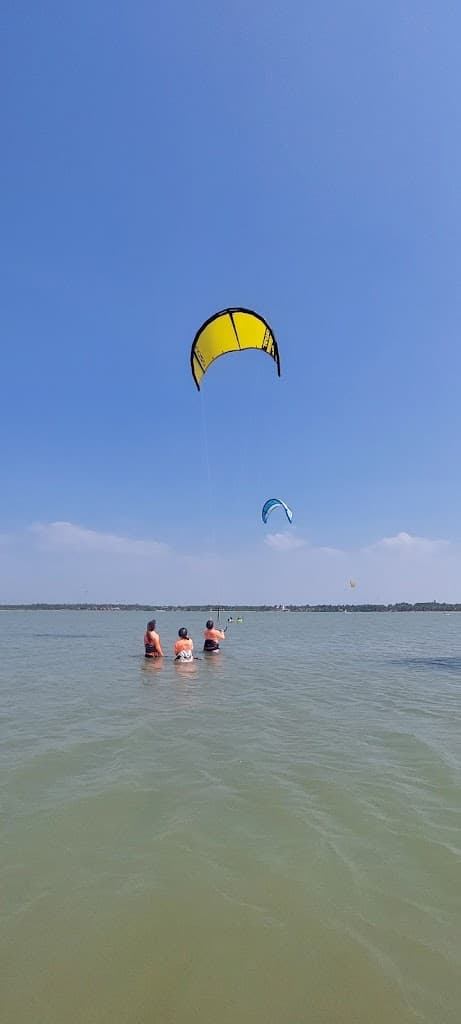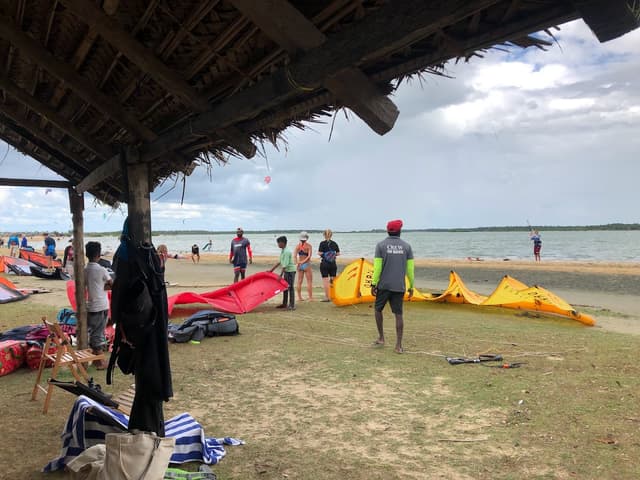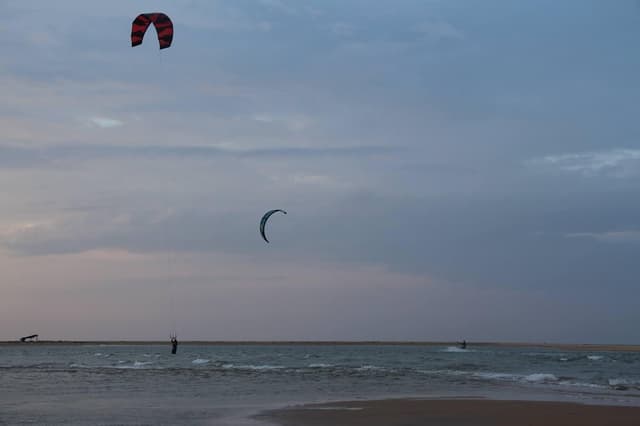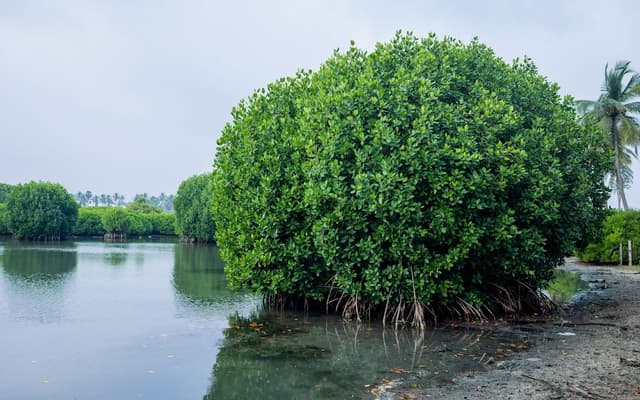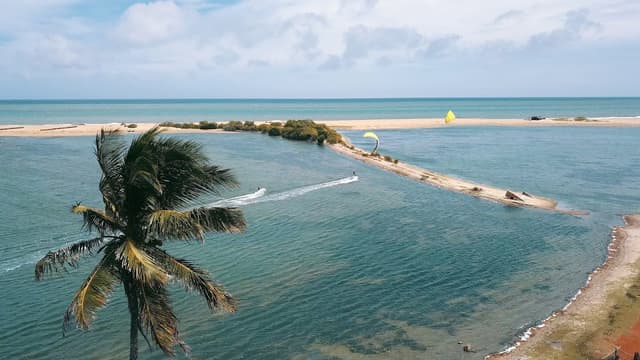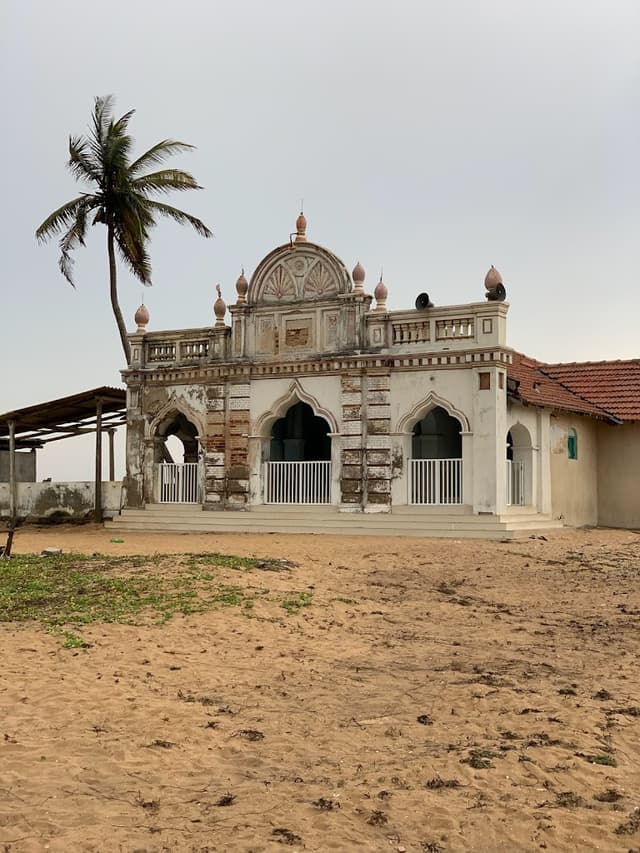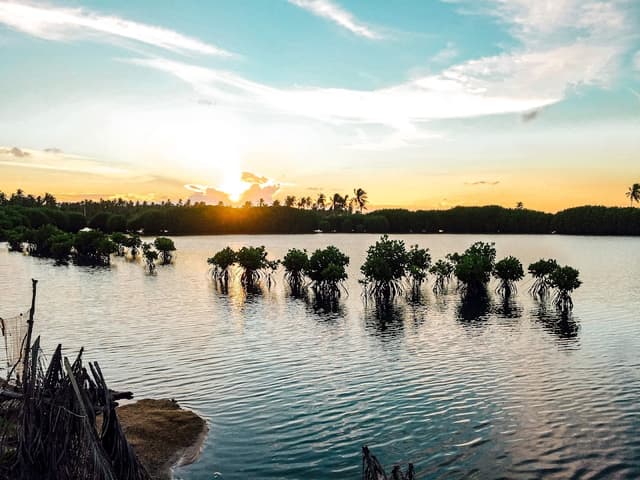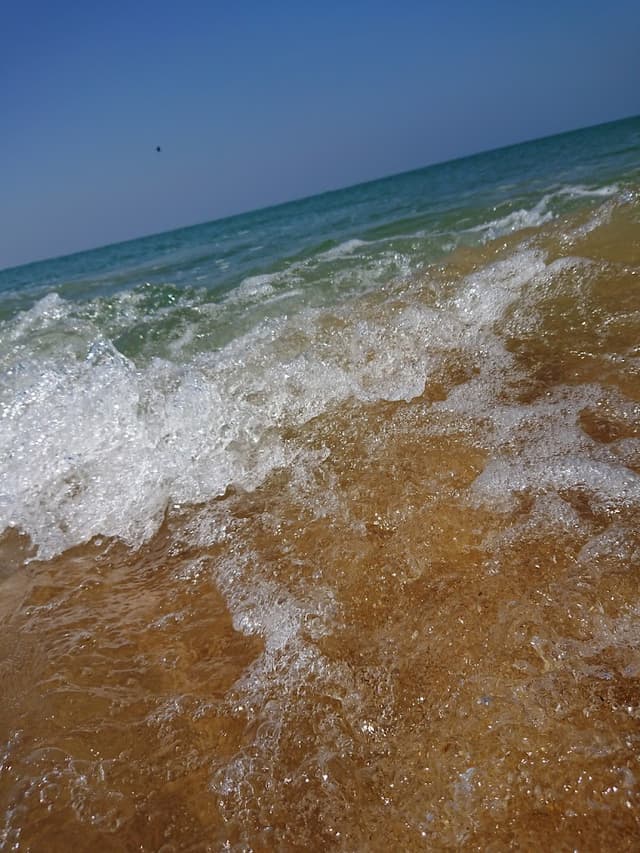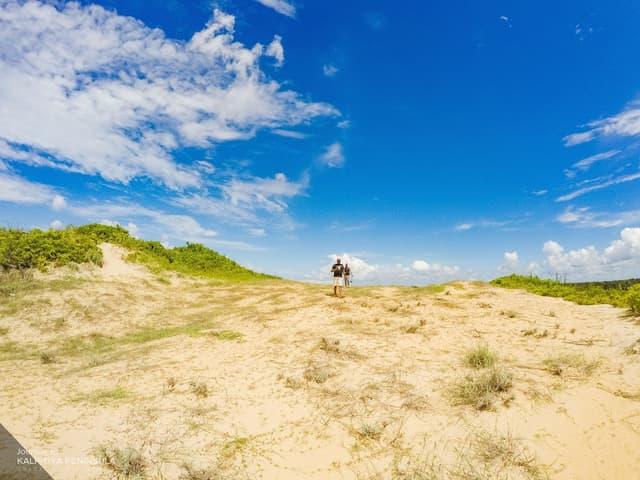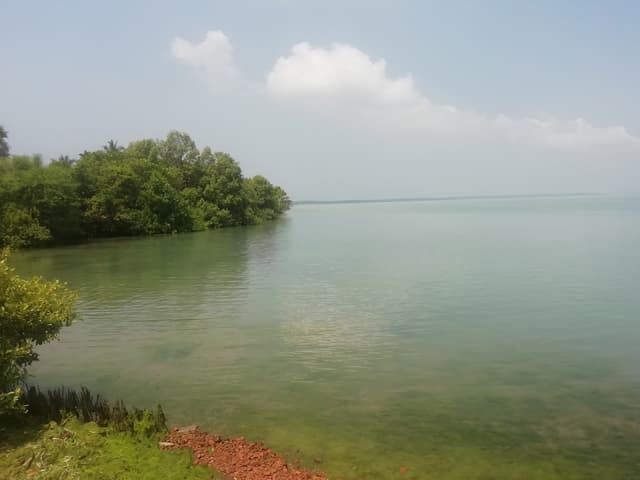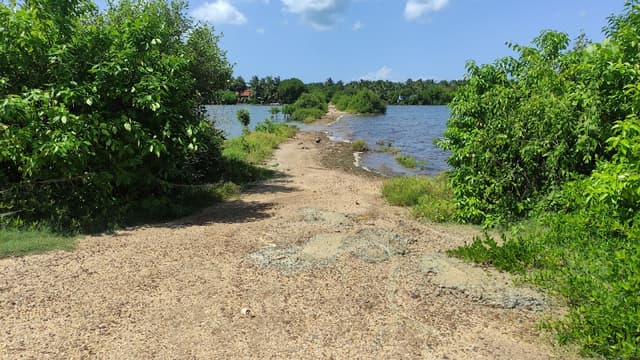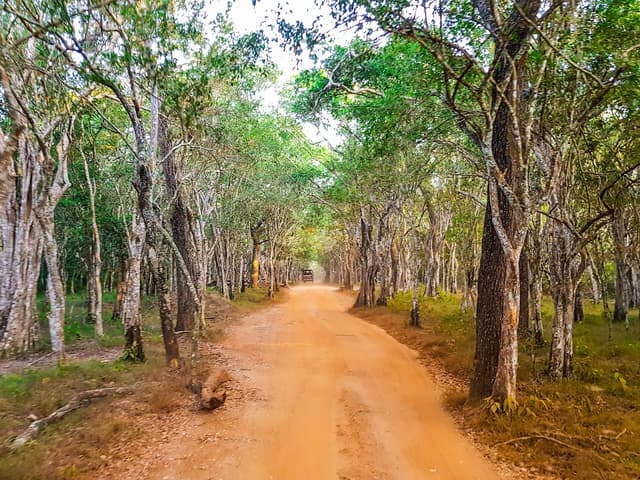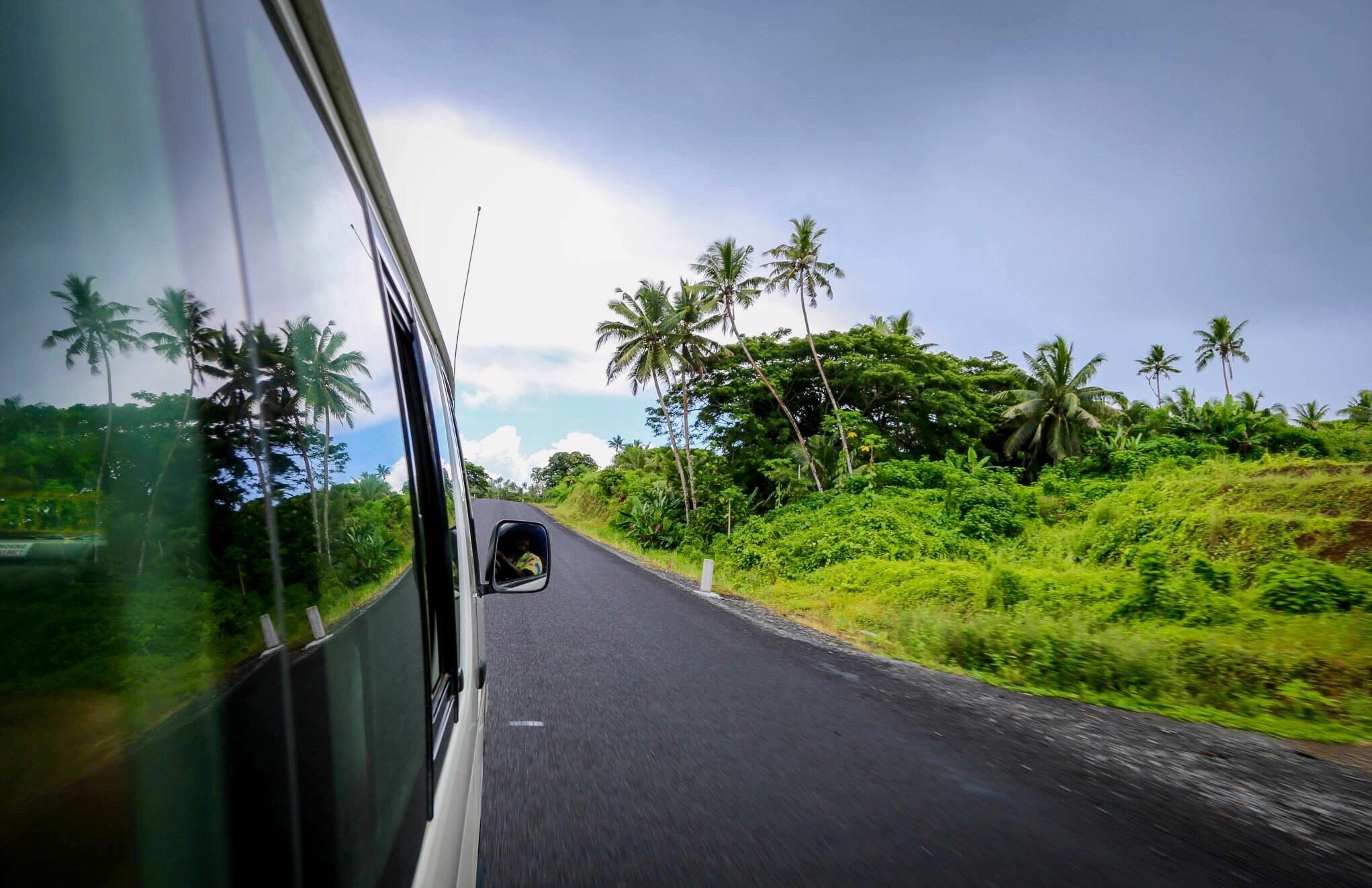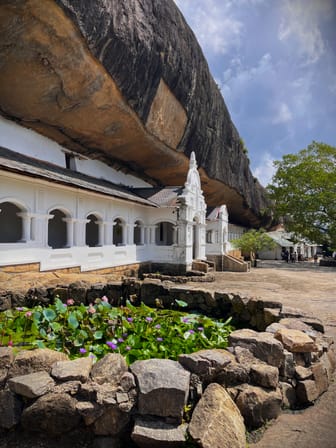South & Southwest Coasts
Best during the November to April season
Tangalle
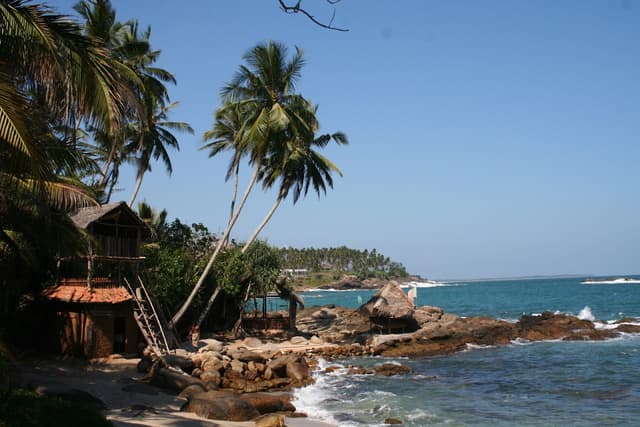
Tangalle
@ravinkavish
Tangalle, located on Sri Lanka's southern coast, is a charming coastal town known for its golden beaches, turquoise waters, and relaxed vibe. It’s a perfect getaway for those seeking a peaceful retreat away from the crowds, offering a mix of natural beauty, cultural attractions, and laid-back coastal life.
The beaches in Tangalle, such as Goyambokka, Silent Beach, and Rekawa, are pristine and ideal for sunbathing, swimming, or simply unwinding to the sound of the waves. Rekawa Beach is also famous for its turtle conservation project, where you can witness sea turtles laying eggs under the moonlight. Tangalle’s lagoon offers kayaking and bird-watching opportunities, while its local markets give a glimpse into the town’s vibrant culture.
For history enthusiasts, Mulkirigala Rock Temple, a short drive away, showcases ancient Buddhist murals and offers panoramic views from the top of the rock.
**Pro tip:** Visit Tangalle between November and April for the best beach weather. Don’t miss sampling fresh seafood at a beachfront restaurant and exploring the nearby mangroves and countryside. Tangalle’s tranquility makes it an ideal spot for both relaxation and adventure.

Details
Tangalle is a serene coastal town, perfect for a laid-back beach experience. While it’s known for its beautiful beaches, it’s less crowded than the popular southern hotspots, making it a great spot to relax. The area offers a few hidden gems, like the peaceful Silent Beach and Rekawa Beach, where you might even spot sea turtles nesting at night!
If you're into wildlife, make sure to visit Kalametiya Bird Sanctuary, a haven for birdwatchers. The town is also home to the Wewurukannala Viharaya, where you can check out a massive Buddha statue and admire the surrounding landscape.
Tip: It’s a great place to chill and take it slow, so take your time exploring the hidden corners of this quiet town before you move on to the next adventure!"
Surf Spots:
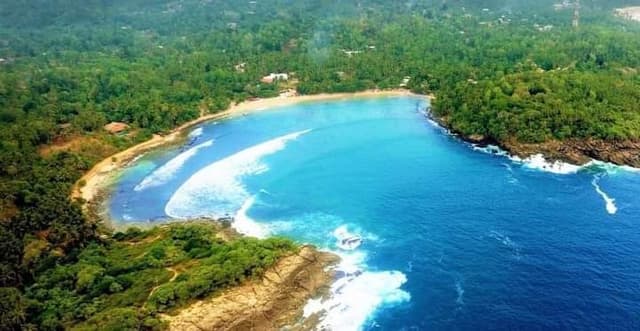
Hiriketiya Beach
@ravinkavish
Hiriketiya Beach, located in the small town of Dickwella on Sri Lanka’s southern coast, is a stunning crescent-shaped bay known for its laid-back atmosphere, crystal-clear waters, and picturesque surroundings. This hidden gem is perfect for those seeking a quiet and relaxed beach experience, away from the more crowded tourist spots.
The beach is a popular spot for surfing, especially for beginners and intermediate surfers, thanks to its gentle yet consistent waves. Its sheltered bay also makes it ideal for swimming, paddleboarding, and sunbathing. The palm-lined shore and clear, turquoise waters create a serene setting, perfect for those looking to unwind.
**Pro tip:** Hiriketiya is not only great for beach activities but also for enjoying delicious seafood at the local cafes and beachside restaurants. The beach is perfect for a day of relaxation, and if you're into surfing, don't miss catching a few waves at this beautiful bay. The best time to visit is between November and April when the weather is ideal for outdoor activities.

Details

Details

Details

Details
Hot Spots:
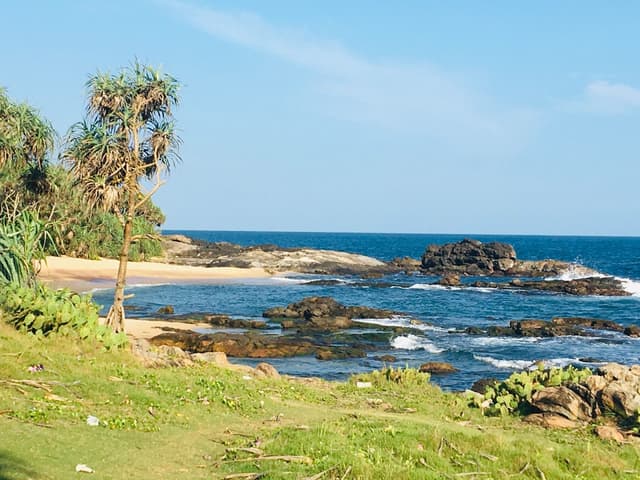
Rekawa Beach
@ravinkavish
Rekawa Beach, located just a short distance from Tangalle, is a pristine and peaceful stretch of coastline renowned for its turtle conservation efforts. This quiet, unspoiled beach is a haven for nature lovers, offering a rare opportunity to witness sea turtles nesting under the cover of night. Rekawa is one of the most significant turtle nesting sites in Sri Lanka, with multiple species of turtles, including the endangered Olive Ridley and Leatherback turtles, coming ashore to lay their eggs.
During the nesting season, which typically runs from November to April, you can join guided night tours to observe these majestic creatures in their natural habitat. In addition to turtle watching, the beach offers a tranquil setting for swimming, sunbathing, and leisurely walks along the shore.
**Pro tip:** To make the most of your visit, plan a nighttime tour to see the turtles, as it’s the highlight of Rekawa Beach. The beach is relatively secluded, so it’s perfect for those seeking a peaceful, nature-focused experience.

Details

Details
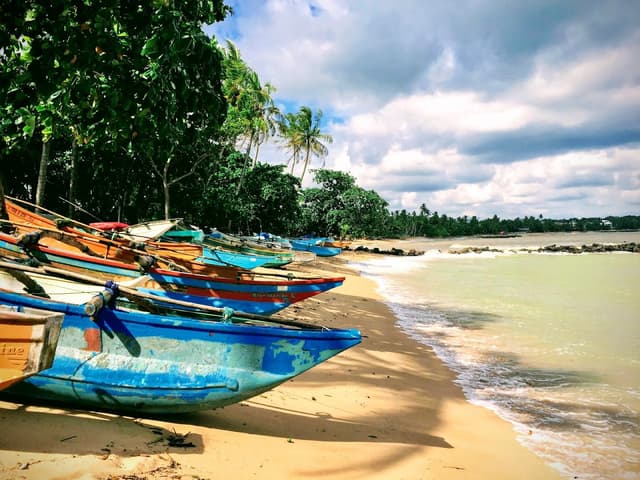
Tangalle Beach
@ravinkavish
Tangalle Beach, located on Sri Lanka's southern coast, is a beautiful and laid-back stretch of coastline, offering a perfect blend of relaxation and natural beauty. Known for its long, golden sandy shoreline, crystal-clear waters, and palm-fringed views, it’s an ideal destination for those seeking a peaceful beach experience without the crowds.
The beach is great for swimming, with calm waters perfect for a refreshing dip, and its spacious layout offers plenty of room to relax. In addition to sunbathing, visitors can take a leisurely stroll along the shore, enjoy the local fishing boats, or explore nearby rock pools. The beach is also close to several restaurants and resorts, offering fresh seafood and local delicacies, making it an easy spot to spend an entire day unwinding.
**Pro tip:** The best time to visit Tangalle Beach is between November and April when the weather is at its finest. If you're in the area, don't miss a visit to nearby sights like the Mulkirigala Rock Temple or Rekawa Beach for turtle watching.

Details
Silent Beach Tangalle
@ravinkavish
Silent Beach in Tangalle is a hidden gem on Sri Lanka’s southern coast, offering an untouched paradise for those seeking peace and solitude. Tucked away from the bustling tourist areas, this secluded stretch of golden sand, framed by swaying palm trees and azure waters, lives up to its name with its serene and tranquil atmosphere.
The beach is perfect for relaxation, sunbathing, or enjoying a quiet swim in its calm waters. The lack of large crowds enhances the sense of exclusivity, making it an ideal spot for couples or solo travelers looking to escape the hustle and bustle. The gentle waves and pristine surroundings create a meditative ambiance, making it a favorite among nature lovers.
**Pro tip:** Pack essentials like water and snacks, as facilities are limited. Early mornings and sunsets are particularly magical here. If you're staying in Tangalle, Silent Beach is a must-visit for its unparalleled tranquility and stunning natural beauty.

Details

Details

Details

Details

Details

Details
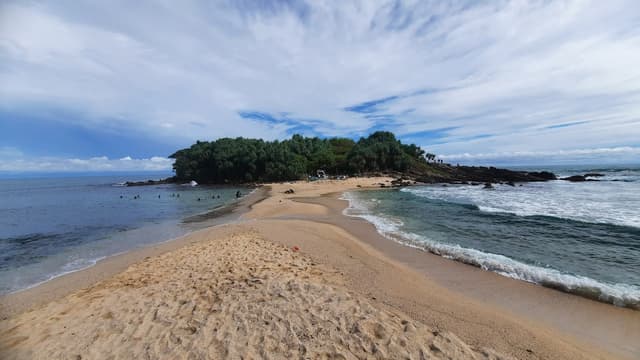
Nilwella Beach
@ravinkavish
Nilwella Beach, located near the town of Tangalle on Sri Lanka's southern coast, is a tranquil and relatively undiscovered beach offering pristine sands and crystal-clear waters. This secluded stretch of coastline is ideal for those seeking peace and solitude, away from the more crowded tourist destinations.
The beach is perfect for swimming, with calm waters and gentle waves, making it an excellent spot for families and those looking to relax in a serene environment. Its quiet atmosphere is enhanced by the surrounding natural beauty, with lush greenery and palm trees framing the shoreline.
**Pro tip:** Nilwella Beach is less commercialized, so it's a great place for a peaceful day by the sea. While there are limited facilities, the lack of crowds ensures a more intimate beach experience. It’s an excellent spot to enjoy nature, take a leisurely walk, or simply unwind under the sun. If you're nearby, also consider visiting Tangalle Beach and Rekawa Beach for more local experiences.

Details
Shouldn't Miss:

Wewurukannala Buduraja Maha Viharaya
@ravinkavish
Wewurukannala Buduraja Maha Viharaya, located in the small town of Wewurukannala in southern Sri Lanka, is a significant Buddhist temple known for its towering statue of the Buddha, which stands at an impressive height of 50 feet. This majestic statue is one of the largest in Sri Lanka and can be seen from miles away, making it a notable landmark in the region.
The temple complex also features beautiful murals, intricately decorated shrines, and a serene atmosphere that attracts both devotees and tourists seeking a peaceful and spiritual experience. The temple is set against a backdrop of lush greenery, and visitors can explore the surrounding areas, including a series of steps leading up to the Buddha statue, offering a great view of the countryside.
The temple's history dates back centuries, with various renovations over the years, and it remains a vibrant place of worship for locals. Visitors can also enjoy the tranquility of the temple grounds, making it an ideal spot for meditation or a reflective visit.
**Pro tip:** The temple is relatively quiet compared to more famous tourist sites, offering a more intimate and serene experience. Be respectful of the religious site, and dress modestly when visiting.

Details
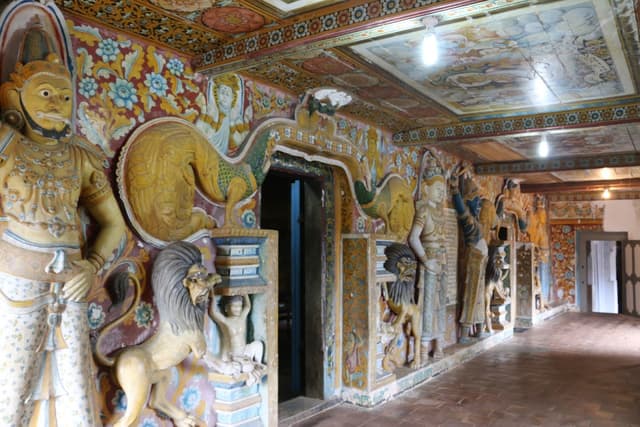
Mulgirigala Raja Maha Viharaya
@ravinkavish
Mulkirigala Raja Maha Viharaya, located about 20 kilometers north of Tangalle in southern Sri Lanka, is an ancient Buddhist temple perched on a rocky hill. The temple is famous for its stunning views, historical significance, and well-preserved Buddhist artwork. The complex consists of several shrines and caves, and its rich history dates back to the 2nd century BC, making it one of Sri Lanka's oldest and most revered religious sites.
The temple is built on a rocky outcrop, and visitors can climb a series of steps to reach the top, where a large Buddha statue overlooks the surrounding countryside. Along the way, you’ll encounter cave temples adorned with beautiful frescoes and ancient Buddhist murals that depict various scenes from the life of the Buddha. The peaceful and serene setting offers a reflective atmosphere, ideal for meditation and spiritual experiences.
**Pro tip:** Mulkirigala is less crowded compared to other cultural sites, so you can enjoy a quiet, uninterrupted visit. The best time to visit is early in the morning or late afternoon to avoid the heat and catch a stunning view from the top. Don’t forget to wear modest clothing when visiting, as it is a sacred site.

Details
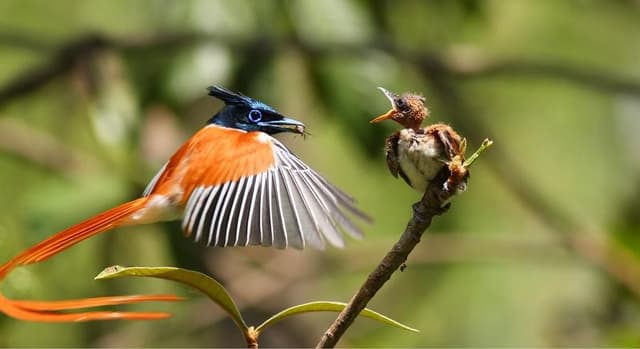
Kalametiya Bird Sanctuary
@ravinkavish
Kalametiya Bird Sanctuary, located in the southern part of Sri Lanka near the town of Tangalle, is a peaceful haven for bird watchers and nature lovers. This coastal sanctuary is home to a diverse range of bird species, both migratory and resident, making it a prime location for birdwatching throughout the year. It is particularly famous for its large population of waterbirds, including storks, herons, and waders.
The sanctuary spans over 2,000 hectares and features a mix of wetlands, salt marshes, and lagoons, providing ideal habitats for a variety of bird species. Among the birds you might spot are the endangered Black-headed Ibis, the Eurasian Spoonbill, and various species of kingfishers. The rich ecosystem also supports a wide range of wildlife, including butterflies, reptiles, and small mammals.
**Pro tip:** The best time to visit Kalametiya Bird Sanctuary is during the migratory season, from November to April, when the bird population is at its peak. You can explore the sanctuary by foot or by boat, and it’s recommended to bring binoculars and a camera to capture the beauty of the birds and surrounding nature.

Details
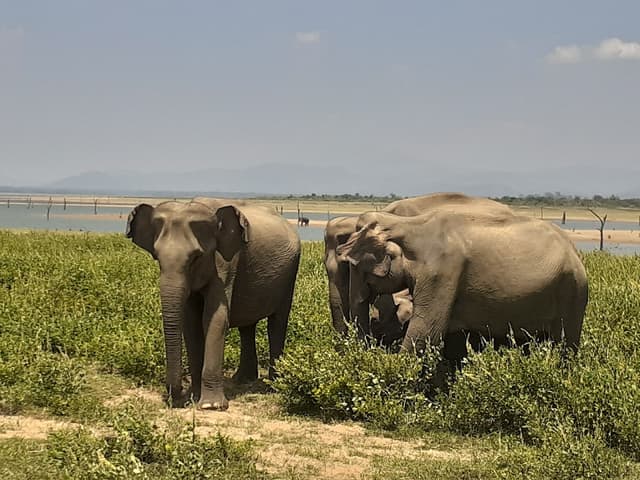
Udawalawe National Park
@ravinkavish
Udawalawe National Park, located in southern Sri Lanka, is a wildlife haven renowned for its vast elephant population and breathtaking landscapes. Spanning over 30,000 hectares, this park is a sanctuary for a variety of wildlife, including leopards, water buffalo, sambar deer, and an array of bird species, making it a paradise for nature enthusiasts and photographers.
The park’s centerpiece is the Udawalawe Reservoir, which adds a serene charm to the scenery and attracts animals, especially during dry seasons. Safaris here are particularly rewarding, offering close encounters with herds of elephants in their natural habitat—one of the most remarkable experiences in Sri Lanka.
**History:** Udawalawe was established in 1972 to provide a haven for animals displaced by the construction of the Udawalawe Reservoir. Its open grasslands and scrub forests mimic an African savanna, creating a unique ecosystem.
**Pro tip:** The best time for wildlife spotting is early morning or late afternoon. Combine your visit with a stop at the Elephant Transit Home nearby to see young elephants being cared for before their release into the wild. Udawalawe is a must-visit for anyone exploring Sri Lanka’s natural treasures.

Details
Matara
Tip: It's passable, but try to pay a visit to the Dondra Head Lighthouse and the southernmost tip of Sri Lanka nearby, as it might interest you.
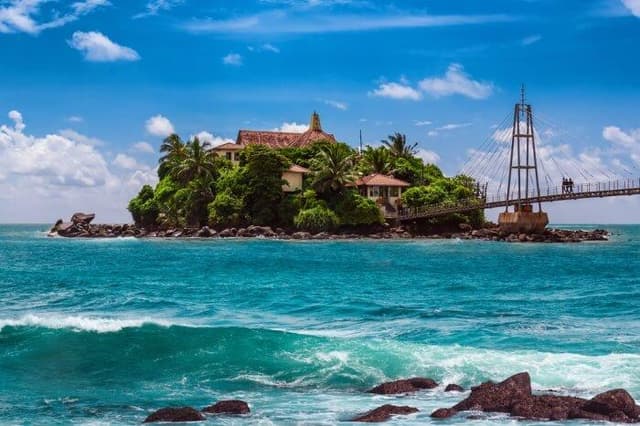
Matara
@ravinkavish
Matara, located along Sri Lanka’s southern coast, is renowned for its beautiful and tranquil beaches, offering a perfect mix of relaxation and adventure. The beaches here are less crowded compared to other tourist hotspots, making them ideal for those seeking a peaceful coastal experience.
**Polhena Beach** is one of the standout beaches in Matara, famous for its calm waters and coral reefs, making it a perfect spot for snorkeling and swimming. The beach is lined with palm trees and has a relaxed vibe, with a few local eateries serving fresh seafood right by the water.
**Matara Beach** itself offers stunning views and a quieter atmosphere compared to other southern beaches. It’s ideal for long walks along the shore, swimming, or simply enjoying the sunset. Nearby, you’ll find the **Matara Fort** and local markets, adding a touch of culture to your beach experience.
For a more secluded experience, **Madhiha Beach** is a hidden gem located just a short drive from the town. It’s perfect for those looking to escape the crowds and enjoy the natural beauty of Sri Lanka’s southern coastline.
**Pro tip:** Matara’s beaches are best visited during the dry season from November to April, when the weather is perfect for sunbathing, swimming, and exploring.

Details
Matara is a chilled-out town where history meets the ocean.
Known for its colonial charm and scenic beaches, it’s a great spot to take a
breather. Explore the remnants of the Matara Fort, stroll through its
lively streets, or relax at Polhena Beach, famous for calm waters and
coral reefs.
Surf Spots:
Lakshawaththa Beach
@ravinkavish
Tucked away on the southern coast of Sri Lanka, **Lakshawaththa Beach** is a serene escape offering a peaceful and quiet atmosphere, perfect for those looking to enjoy a more secluded and unspoiled stretch of coastline. This beach is becoming increasingly popular for surfing, especially for those who prefer less crowded spots compared to the more famous surf destinations. The gentle yet consistent waves make it an ideal location for both beginner and intermediate surfers. Beyond surfing, you can relax on the golden sands, take a swim in the calm waters, or simply enjoy the lush green surroundings. For a mix of adventure and tranquility, Lakshawaththa Beach is a great choice for surf enthusiasts and nature lovers alike.

Details

Details
Hot Spots:

Details
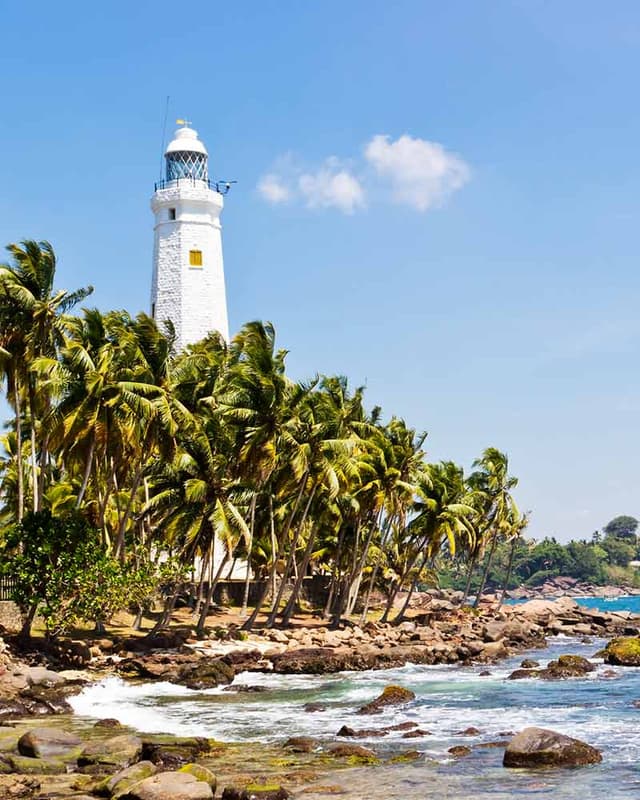
Dondra Head Lighthouse
@ravinkavish
**Dondra Head Lighthouse**, standing proudly at the southernmost point of Sri Lanka near Matara, is an iconic landmark and one of the tallest lighthouses in Southeast Asia. Built in 1889 by the British, this towering 49-meter structure is constructed from granite and painted white, making it a striking feature against the azure skies and turquoise waters.
The lighthouse serves as a vital navigational aid, guiding ships along the southern coast and marking the meeting point of the Indian Ocean. Its location offers breathtaking panoramic views of the coastline and the endless ocean, making it a favorite spot for photography and quiet reflection.
Visitors are often enchanted by the serene surroundings, with lush greenery and the gentle sound of waves adding to the charm. While entry into the lighthouse is restricted, the area around it provides a peaceful atmosphere to enjoy the southern tip of the island.
**Pro tip:** Visit Dondra Head during the late afternoon to enjoy cooler weather and catch a stunning sunset over the Indian Ocean. The lighthouse is easily accessible from Matara and can be part of a scenic coastal day trip.

Details
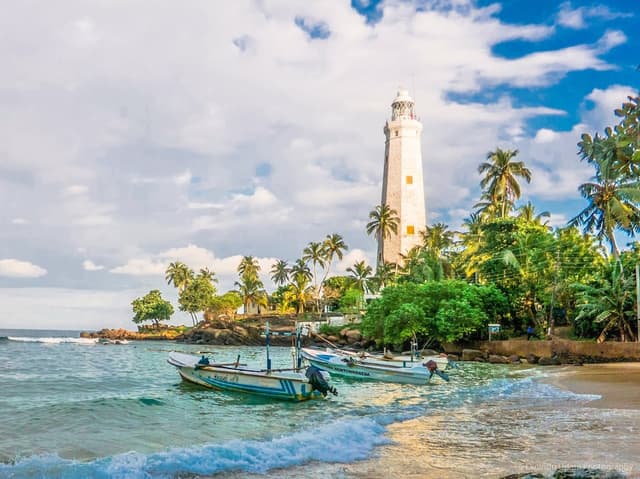
Hummana Beach Dondra
@ravinkavish
**Hummanaya Beach**, located near Dondra, is not just a picturesque coastal spot but also home to Sri Lanka’s famous natural blowhole, the **Hummanaya Blowhole**. This beach is where nature puts on a dramatic show, as water shoots high into the air through a natural fissure in the rock, creating a spectacle that's both powerful and mesmerizing.
The beach itself is serene and less crowded, offering visitors a chance to relax while taking in the rugged beauty of the southern coastline. The turquoise waters, rocky cliffs, and the sound of crashing waves create a perfect escape for nature lovers and adventurers.
For an unforgettable experience, walk to the blowhole during high tide when the waves are strongest, and witness the spray shooting up to 30 meters. The area around the beach also features small eateries and local shops where you can enjoy fresh seafood and refreshments.
**Pro tip:** Combine your visit to Hummanaya Beach with a trip to the nearby **Dondra Head Lighthouse** for a full day of exploring Sri Lanka’s southernmost treasures. The best time to see the blowhole in action is during the monsoon season when the sea is rougher.

Details
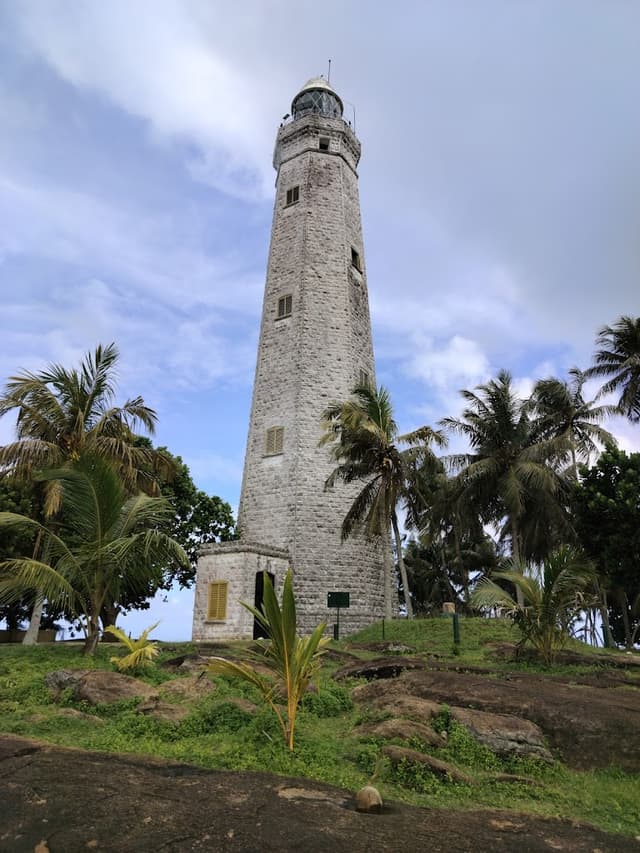
Point of Dondra
@ravinkavish
**Point of Dondra**, also known as the southernmost tip of Sri Lanka, is a place of immense geographical and cultural significance. Located near Matara, this serene spot marks where the island meets the vast expanse of the Indian Ocean. With its stunning coastal views, it’s a favorite destination for those seeking tranquility and scenic beauty.
The area is home to the iconic **Dondra Head Lighthouse**, one of the tallest and oldest lighthouses in Asia, built by the British in 1889. The surrounding waters are deep and clear, making it a popular area for whale watching during the season. Local fishermen can often be seen at work, adding a touch of authentic coastal life to your visit.
Dondra is also rich in history, with its ancient **Devinuwara Temple**, a revered Buddhist pilgrimage site dedicated to God Vishnu. The temple and its annual Esala festival bring thousands of devotees, showcasing Sri Lanka’s spiritual heritage.
**Pro tip:** Visit Point of Dondra during sunrise or sunset for breathtaking views. Pair your visit with a stop at the **Hummanaya Blowhole** or explore the lighthouse grounds for a day filled with natural and cultural wonders.

Details
Mirissa
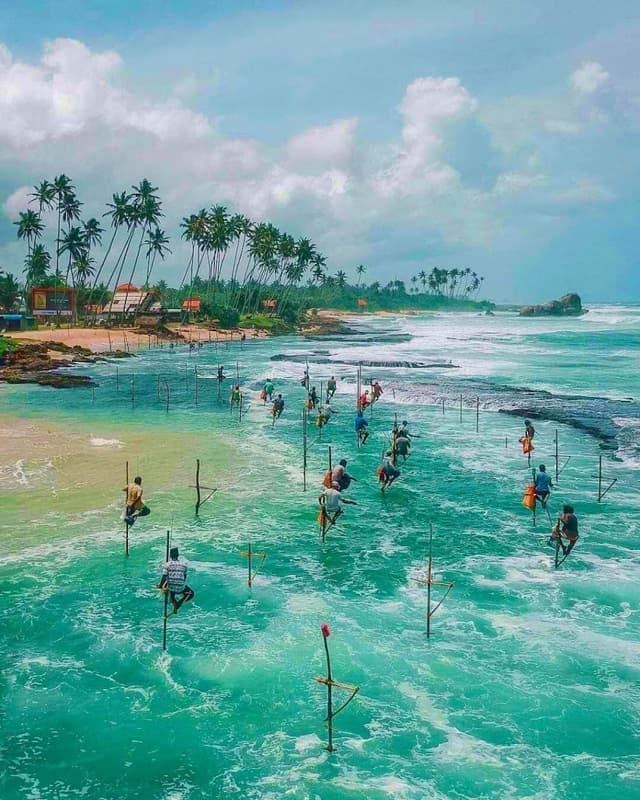
Mirissa
@ravinkavish
**Mirissa**, a charming beach town on Sri Lanka’s southern coast, is the ultimate tropical getaway known for its stunning sandy beaches, vibrant nightlife, and unforgettable marine experiences. Whether you're seeking relaxation or adventure, Mirissa has something for everyone.
The crescent-shaped **Mirissa Beach** is the town’s crown jewel, offering crystal-clear waters perfect for swimming, snorkeling, or simply lounging under the sun. It’s also a hub for water sports, with options like surfing for both beginners and seasoned riders.
One of Mirissa's most iconic attractions is **Parrot Rock**, a small rocky islet accessible during low tide, offering panoramic views of the coastline. For a magical sunrise or sunset, it's the perfect spot to soak in the beauty of the Indian Ocean.
Mirissa is also world-famous for **whale watching**, particularly from November to April. Tours departing from Mirissa Harbor give visitors a chance to see blue whales, sperm whales, and playful dolphins up close.
The vibrant nightlife features beachfront restaurants and bars offering fresh seafood, cocktails, and live music. It's an ideal setting for travelers to unwind and socialize.
**Pro tip:** Visit Mirissa early in the morning for whale watching and spend the rest of the day exploring the beach or nearby attractions like the secret beach or Weligama. The best time to visit is during the dry season for calm seas and clear skies.

Details
Mirissa is a small but lively beach town with a laid-back vibe that’s perfect for both relaxation and adventure. Known for its golden sandy beaches, it’s a popular spot for whale watching (seasonal) and surfing. The beach is lined with cozy cafés and bars, making it a great place to unwind after a day of exploring.
One of the top attractions is Secret Beach, a small cove with clear waters, though it’s not as hidden anymore, still worth a visit! For an unbeatable view, head to Coconut Tree Hill, a popular spot for sunset selfies.
Tip: Mirissa’s nightlife has a relaxed, backpacker-friendly vibe, with many bars offering beachside views for a chilled night out.
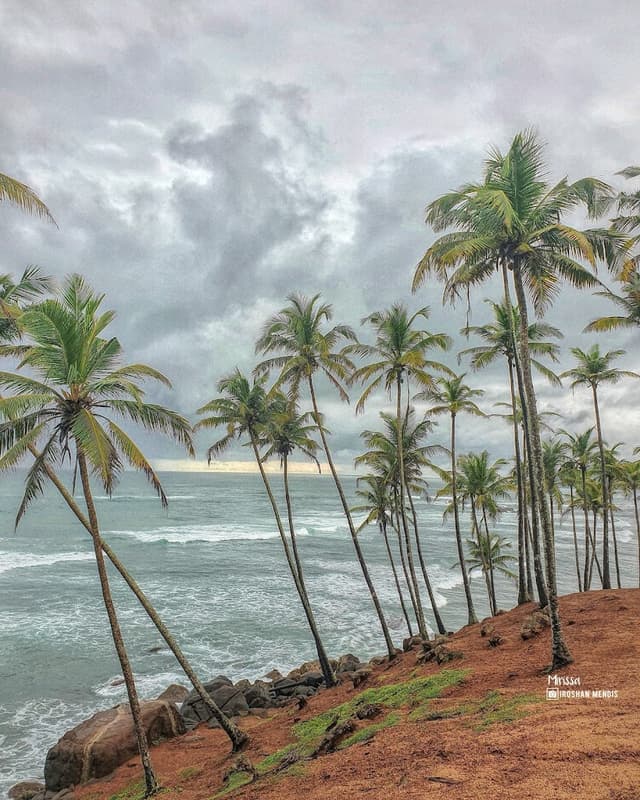
Mirissa Beach
@ravinkavish
Mirissa Beach, nestled on Sri Lanka’s southern coast, is a slice of tropical paradise renowned for its golden sands, swaying coconut palms, and crystal-clear waters. Its laid-back atmosphere and scenic beauty make it one of the island’s most beloved beaches.
The beach’s gentle waves are perfect for swimming, snorkeling, or paddleboarding, while the eastern end offers great spots for beginner-friendly surfing. A highlight of Mirissa Beach is **Parrot Rock**, a small islet accessible at low tide, providing breathtaking views of the surrounding coastline.
During the season (November to April), the beach transforms into a starting point for **whale-watching adventures**, with boats departing at dawn to spot blue whales, sperm whales, and dolphins. It’s an experience that brings nature lovers from all over the world.
The western end of the beach comes alive in the evening with vibrant beach bars and seafood restaurants, offering fresh catches of the day, tropical cocktails, and live music under the stars.
**Pro tip:** For the best experience, visit during sunrise to enjoy the serene beauty before the crowds arrive. Stay into the evening to soak in the lively atmosphere of this tropical gem.

Details
Secret Beach Mirissa
@ravinkavish
Secret Beach Mirissa has become more popular over the years, and while it still retains a sense of seclusion, it's no longer the hidden gem it once was. However, despite the increasing visitors, it still offers a peaceful atmosphere compared to the busier Mirissa Beach.
The beach's natural charm remains intact, with its clear waters, picturesque rocky formations, and peaceful vibe. It's a perfect spot for a relaxed day by the ocean, swimming, snorkeling, or simply enjoying the beauty of the surroundings. While it’s not as quiet as it used to be, it still offers a great alternative to the crowds, especially if you visit during off-peak hours.
Pro tip: To enjoy the beach at its most serene, visit early in the morning or later in the afternoon when the crowds thin out. Though it's more popular now, it’s still worth the visit for its stunning beauty.

Details
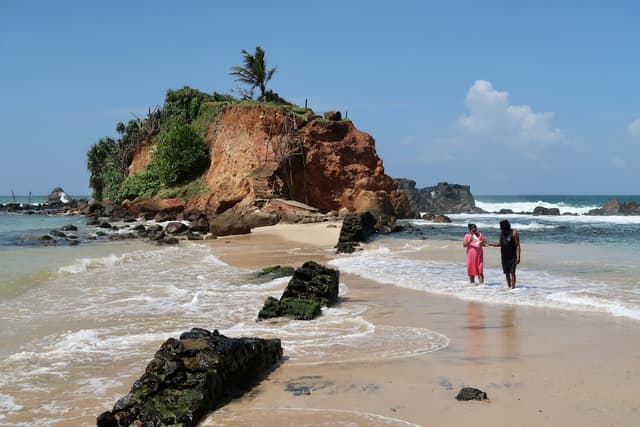
Parrot Rock
@ravinkavish
Parrot Rock is a small rocky islet just off Mirissa Beach, offering one of the best vantage points to soak in the beauty of this coastal paradise. Accessible by wading through shallow water at low tide, the rock is a favorite spot for travelers seeking a panoramic view of Mirissa's crescent-shaped beach and the endless blue ocean.
The climb to the top is short but slightly steep, making it an adventurous yet rewarding experience. Once at the summit, you’re greeted by a peaceful atmosphere, gentle sea breezes, and breathtaking scenery, particularly during sunrise or sunset when the colors of the sky transform the landscape.
Though its name suggests a connection to parrots, the origins of the name remain unclear. What’s certain is that Parrot Rock has become an iconic part of Mirissa’s coastal charm, drawing photographers and nature lovers alike.
**Pro tip:** Visit during low tide for safe access and wear sturdy footwear as the rocks can be slippery. Plan a morning or evening trip to avoid the midday heat and catch the best views.

Details
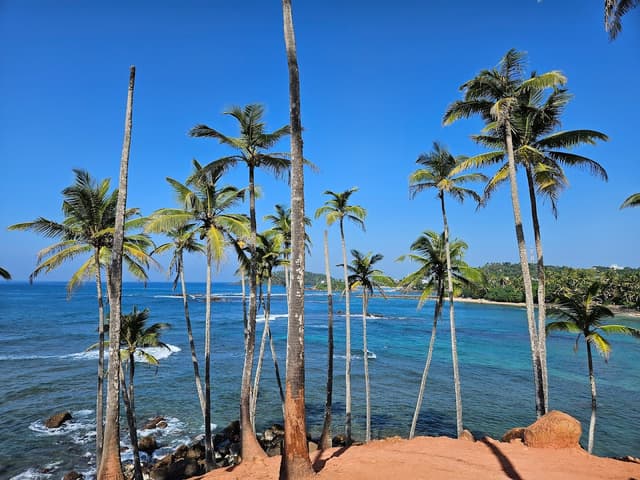
Coconut Tree Hill
@ravinkavish
Coconut Tree Hill in Mirissa is a scenic spot that has become increasingly popular among travelers for its stunning views and Instagram-worthy scenery. Perched on a hilltop, the area is dotted with tall, swaying coconut trees that perfectly frame the horizon, offering a picture-perfect view of the turquoise waters of the Indian Ocean and the surrounding coastline.
Though it’s not a traditional beach or historical site, **Coconut Tree Hill** has earned its place as one of the top photo spots in Sri Lanka. Visitors often come here to watch the sunset or simply to take in the breathtaking landscape. The hill is easily accessible, with a short walk to the top from the main road, where the towering coconut trees and panoramic views await.
The site was originally a small fishing village area, but in recent years it has become a popular stop for those exploring Mirissa. It's an excellent spot to relax, take in the natural beauty, and capture some incredible photographs.
**Pro tip:** Early mornings or late afternoons are the best times to visit, as the lighting is perfect for photos and the temperature is more comfortable. Be mindful of the local environment and avoid disturbing the coconut trees.

Details
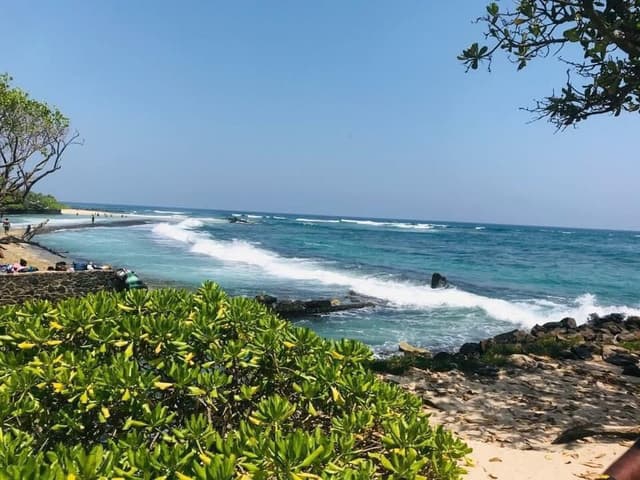
Thalaramba Beach
@ravinkavish
Thalaramba Beach, located just a short drive from Mirissa, is a serene and relatively untouched stretch of coastline that offers a peaceful escape from the more crowded beaches nearby. Known for its golden sands, clear turquoise waters, and laid-back vibe, Thalaramba Beach is perfect for those looking to relax in a more tranquil environment.
The beach is ideal for swimming, as its gentle waves make it safe for both adults and children. The shallow waters extend for quite a distance, making it great for wading and exploring the shoreline. Thalaramba Beach is also a perfect spot for a leisurely walk, with its scenic surroundings of palm trees and coastal beauty.
While it’s not as well-known as some of the other beaches in the region, it has become a favorite for those in search of quieter beach days. The surrounding area has a few small guesthouses and local restaurants, but it retains a low-key atmosphere, making it feel more like a hidden retreat.
**Pro tip:** Thalaramba Beach is quieter during the mornings and evenings, making it the perfect time to enjoy a peaceful walk or swim. Bring your own supplies, as amenities on the beach are limited.

Details
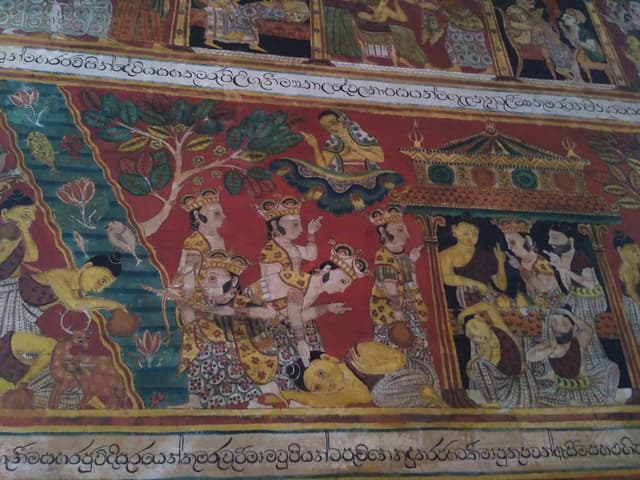
Samudragiri Viharaya
@ravinkavish
Samudragiri Viharaya, located in Mirissa, is a serene Buddhist temple perched on a hill overlooking the stunning Indian Ocean. The name “Samudragiri” translates to “Ocean Hill,” reflecting its breathtaking coastal vantage point. This temple offers a tranquil escape from the bustling beach scene below, making it an ideal spot for spiritual reflection or simply soaking in the natural beauty.
The temple’s highlight is the **giant seated Buddha statue**, which faces the sea, symbolizing peace and harmony. Visitors can enjoy panoramic views of Mirissa’s coastline and the surrounding lush greenery from the temple grounds. The atmosphere is calm and meditative, with the sound of waves providing a soothing backdrop.
Though relatively modest compared to Sri Lanka’s ancient temples, Samudragiri Viharaya is rich in spiritual significance for the local community and offers travelers a glimpse into the island's Buddhist heritage.
**Pro tip:** Visit during sunset for a magical view as the golden light bathes the ocean and surrounding landscape. Dress modestly to show respect, as this is a place of worship.

Details
Weligama
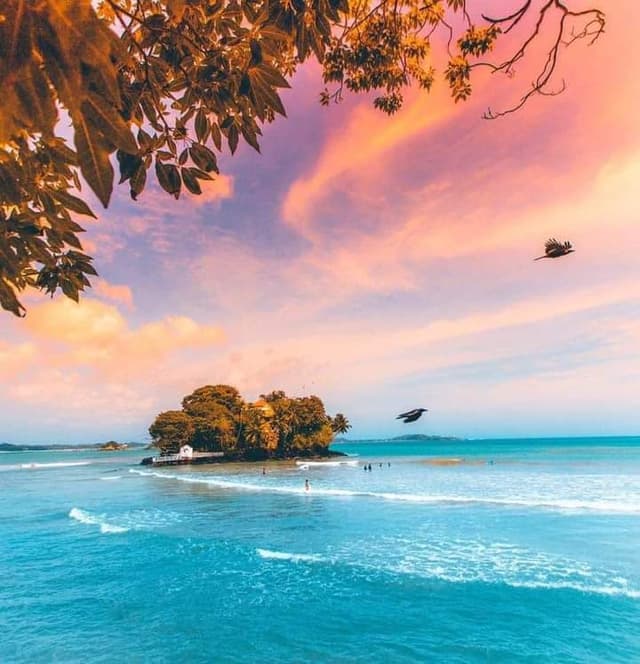
Weligama
@ravinkavish
Weligama is a lively coastal town located between Mirissa and Matara, known for its long sandy beach, surf-friendly waves, and vibrant atmosphere. The name "Weligama" translates to "sandy village," and the beach lives up to its name with its expansive shoreline perfect for beach walks, swimming, and sunbathing.
Weligama is particularly famous for its surf scene, attracting both beginners and seasoned surfers. The beach is known for its gentle, consistent waves, making it a great place to take surf lessons or simply enjoy the ocean. It's also home to the unique **stilt fishing** method, where fishermen perch on stilts in the shallow waters, a practice that has become a notable feature of the local culture.
Beyond the beach, Weligama has a relaxed, yet vibrant atmosphere, with a growing number of cafes, restaurants, and shops along the main road. The town is also a great base for exploring nearby attractions like **Kushtarajagala Temple**, which features a large statue of a seated Buddha.
For those looking for a mix of relaxation, adventure, and local culture, Weligama offers an ideal blend.
**Pro tip:** For a quieter experience, visit early in the morning or during weekdays, when the beach is less crowded. Don’t miss the stilt fishermen, especially at sunrise or sunset, for a truly unique photo opportunity.

Details
Weligama is a charming coastal town known for its long, sandy beach and consistent surf, making it a haven for beginner and intermediate surfers. The beach is lined with cozy cafés, guesthouses, and local seafood joints, offering a relaxed atmosphere.
Weligama Bay is famous for its traditional stilt fishermen, adding a unique cultural touch to the coastal views. If you're into surfing, the shallow waters here are perfect for lessons. For a peaceful retreat, head to the nearby Kustharajagala Statue, an ancient Buddhist monument.
Weligama is perfect for those seeking a blend of adventure and relaxation, ideal for a beach day, surf session, or just soaking up the coastal vibes."
Surf Spots
Midigama Beach
@ravinkavish
Midigama Beach, located between Weligama and Ahangama, is a hidden gem for surfers and beach lovers. Known for its consistent waves, it’s a great spot for both beginners and more experienced surfers. The beach has a relaxed, laid-back vibe with a less crowded atmosphere compared to nearby hotspots.
In addition to surfing, Midigama offers a peaceful environment for swimming, sunbathing, and beach walks. The surrounding area has a mix of small guesthouses and cafes, providing a perfect escape for those looking to enjoy the natural beauty of Sri Lanka’s southern coast.
**Pro tip:** Visit during the early morning or late afternoon for a quieter experience and to catch the best surf conditions.

Details
Ahangama Beach
@ravinkavish
Ahangama Beach, located on the southern coast of Sri Lanka, is a charming and relatively peaceful beach destination. Known for its long stretch of golden sand and clear blue waters, it offers a perfect setting for relaxation, swimming, and leisurely walks along the shore. The beach is popular for surfing, especially among intermediate surfers, thanks to its consistent waves.
Ahangama is less crowded than nearby beaches like Weligama, making it an ideal spot for those seeking a quieter, more laid-back experience. The surrounding area is dotted with small guesthouses, local eateries, and cafes where you can enjoy fresh seafood and the scenic beauty of the coastline.
**Pro tip:** Early mornings or late afternoons are the best times to visit for a peaceful atmosphere and stunning views of the sunset.

Details

Details

Details
Hot Spots
Abimanagama Beach
@ravinkavish
Abimanagama Beach, located near Weligama, is a quiet, lesser-known beach offering a peaceful escape from the more crowded tourist spots. The beach features soft golden sands and clear, calm waters, making it an ideal spot for swimming, sunbathing, and leisurely walks along the shore. The surrounding area is relatively untouched, providing a serene atmosphere for relaxation.
With fewer visitors, Abimanagama Beach is perfect for those looking to enjoy the natural beauty of Sri Lanka’s southern coastline in a more tranquil setting.
**Pro tip:** It’s best to visit early in the morning or late afternoon for a quiet, uncrowded experience and to enjoy the stunning coastal views.

Details
Coconut Beach
@ravinkavish
Coconut Beach, located near Ahangama, is a tranquil and scenic spot known for its palm-lined shores and clear blue waters. It’s a quiet escape, offering a peaceful environment ideal for swimming, sunbathing, or simply relaxing under the shade of the coconut trees. The beach is less crowded compared to nearby areas, making it perfect for those seeking a more serene and private experience.
The gentle waves make it a great spot for a refreshing dip, while the surrounding landscape of lush greenery adds to the beauty of the place.
**Pro tip:** Visit during the morning or late afternoon for a peaceful atmosphere and stunning views, especially at sunrise or sunset.

Details
Coconut Point natural pool
@ravinkavish
Coconut Point Natural Pool, located near Ahangama, is a serene and unique spot where the ocean meets a natural rock pool. This hidden gem is perfect for swimming, as the pool is sheltered from the rough sea, providing calm and clear waters. Surrounded by lush greenery and rocks, the natural pool offers a peaceful environment away from the crowds.
It’s an ideal spot for those looking to relax, enjoy the beauty of the coastline, and take a refreshing dip. The area is also great for photography, with its stunning natural landscape.
**Pro tip:** The natural pool is best visited during low tide when the water is calmest. Be mindful of the surrounding rocks, as they can be slippery.

Details
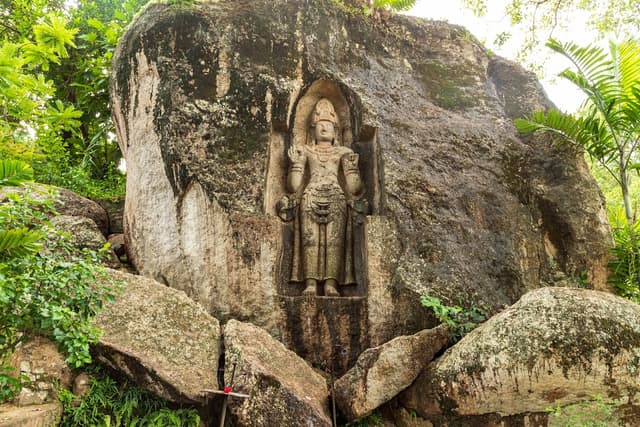
Kushtarajagala Statue
@ravinkavish
The Kushtarajagala Statue, located in Weligama, is an intriguing ancient rock carving shrouded in history and legend. This 9th-century CE statue, carved into a rock face, is believed to depict a Bodhisattva, though its exact origins and identity remain a topic of debate among historians and archaeologists. The name "Kushtarajagala" translates to "Rock of the Leper King," stemming from a local legend that a king afflicted with leprosy was cured by the blessings of this sacred figure.
The intricately carved statue, standing about 12 feet tall, showcases fine craftsmanship with detailed ornaments and a serene expression, reflecting Mahayana Buddhist influence. It’s a remarkable example of Sri Lanka’s artistic and religious heritage, offering a glimpse into the island’s rich past.
**Pro tip:** Pair your visit to Kushtarajagala with a stop at Weligama beach for a mix of culture and relaxation. Early morning is the best time to visit to appreciate the statue in a peaceful setting.

Details
Talpe
Surf Spots

Details
Hot Spots

Details

Details
Mihiripenna Beach
@ravinkavish
Mihiripenna Beach, located near Unawatuna, is a tranquil escape known for its shallow turquoise waters and natural rock pools. This hidden gem offers a quieter alternative to busier beaches, making it ideal for relaxing and enjoying the serene coastal beauty. The calm waters protected by a reef are perfect for swimming and snorkeling, with opportunities to spot colorful marine life.
The beach is fringed by swaying palm trees and a few laid-back cafes, providing a cozy setting to unwind. It’s a favorite spot for travelers seeking a peaceful seaside retreat away from the crowds.
**Pro tip:** Visit during low tide to explore the rock pools, and don’t forget your snorkeling gear for a closer look at the underwater world.

Details

Details
Thalpe Beach
@ravinkavish
Thalpe Beach, located just south of Unawatuna, is a serene and less-crowded stretch of coastline known for its unique charm and natural beauty. The beach features a series of iconic rectangular rock pools carved into the reef during the colonial era, originally used for harvesting salt. These pools now serve as relaxing natural jacuzzis during low tide.
The soft golden sands and gentle waves make Thalpe a perfect spot for unwinding, while its laid-back vibe attracts travelers looking to escape the busier beaches nearby. A few boutique hotels and stylish cafes add to the beach’s quiet sophistication.
**Pro tip:** Time your visit with the low tide to experience the rock pools, and bring a camera—the setting is picture-perfect!

Details
Koggala Beach
@ravinkavish
Koggala Beach, located along Sri Lanka’s southern coast, is a pristine stretch of golden sands kissed by the turquoise waves of the Indian Ocean. Known for its natural beauty and calm surroundings, it’s perfect for long beach walks, swimming, and sunbathing. Koggala is also famous for its traditional **stilt fishermen**, a unique and photogenic sight symbolizing the region’s coastal heritage.
Close by, you’ll find the **Koggala Lake** and Martin Wickramasinghe Folk Museum, adding cultural and ecological experiences to your visit. With fewer crowds, Koggala offers a peaceful escape for travelers seeking tranquility.
**Pro tip:** Visit early morning to catch the stilt fishermen in action and enjoy a serene start to your day.

Details
Galle
Spend your last days in Galle
Galle
@ravinkavish
Galle, located on Sri Lanka’s southwestern coast, is a historic city known for its charming blend of colonial architecture, vibrant culture, and coastal beauty. The **Galle Fort**, a UNESCO World Heritage site, is the city's most famous attraction, offering cobblestone streets, old Dutch buildings, and panoramic views of the Indian Ocean. The fort was built by the Portuguese in the 16th century and later fortified by the Dutch, reflecting a rich colonial past.
Beyond the fort, Galle is home to beautiful beaches, including **Unawatuna Beach**, a popular spot for swimming and snorkeling. The city also offers bustling markets, boutique shops, and cafes where you can experience local culture and cuisine.
**Pro tip:** Take a walk along the ramparts of Galle Fort at sunset for a beautiful view of the ocean and the city’s skyline.

Details
Galle is a historic gem on Sri Lanka’s southwest coast, blending colonial architecture with vibrant street life. The town's main highlight is the Galle Fort, a UNESCO World Heritage Site that dates back to the 16th century. Walk along its cobblestone streets, visit the Galle Lighthouse, and explore old Dutch buildings that now house boutiques, cafes, and galleries.
Galle offers a rich cultural experience, with spots like the National Museum and the Meeran Mosque inside the Fort. The surrounding beaches, such as Unawatuna and Mihiripenna, provide the perfect spot to unwind after a day of exploring.
With its mix of history, culture, and scenic coastal views, Galle is a must-visit destination for anyone traveling around Sri Lanka.
Unawatuna Beach
@ravinkavish
Unawatuna Beach, located just a few kilometers from Galle, is one of Sri Lanka’s most famous and idyllic coastal destinations. Known for its golden sands, calm turquoise waters, and lush palm-fringed shoreline, it’s a perfect spot for swimming, sunbathing, and snorkeling. The beach also has a lively vibe with plenty of beachfront cafes, bars, and shops catering to travelers.
Nearby, you can explore the iconic **Jungle Beach** or visit the **Peace Pagoda**, which offers stunning panoramic views of the coastline. Unawatuna is also known for its vibrant nightlife, making it a favorite for travelers seeking both relaxation and entertainment.
**Pro tip:** Visit early morning for a serene experience, and don’t miss the sunset—it’s magical here!

Details
A Walk in Galle Fort
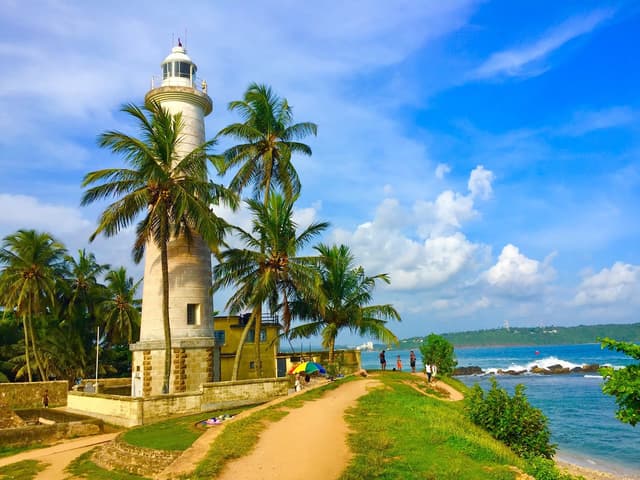
Galle Dutch Fort
@ravinkavish
The Galle Dutch Fort, a UNESCO World Heritage Site, is a captivating blend of history, culture, and coastal beauty. Built by the Portuguese in 1588 and later fortified by the Dutch in the 17th century, this iconic landmark is a testament to Sri Lanka's colonial past and architectural brilliance. The fort's massive stone walls have withstood centuries of weather and waves, offering stunning views of the Indian Ocean.
Inside the fort, you'll find cobblestone streets lined with colonial-era buildings, charming boutiques, art galleries, and cafes. Highlights include the Galle Lighthouse, the Dutch Reformed Church, and the Maritime Museum. As you wander, the mix of European and South Asian influences becomes evident in the architecture and atmosphere.
**Best time to visit:** Visit in the late afternoon to enjoy cooler weather and a magical sunset over the ramparts. Exploring in the evening is also delightful as the fort comes alive with lights and a vibrant atmosphere.
The Galle Dutch Fort is a must-visit destination for history enthusiasts, architecture lovers, and anyone seeking to experience the charm of Sri Lanka's southern coast.

Details
Galle Fort Clock Tower
@ravinkavish
The Galle Fort Clock Tower is an iconic feature of the Galle Dutch Fort, standing tall since 1883 as a tribute to Dr. Peter Daniel Anthonisz, a respected local surgeon. Its sturdy, four-sided stone structure reflects colonial architectural influences and serves as a striking landmark within the fort. Positioned near the main entrance, the clock tower offers a glimpse into the fort's history while adding to its timeless charm. A visit to this historic tower provides a deeper appreciation of the rich heritage preserved within Galle Fort.

Details
Galle Lighthouse
@ravinkavish
The Galle Lighthouse, standing gracefully on the southern edge of the Galle Dutch Fort, is the oldest lighthouse in Sri Lanka, originally built in 1848. The current structure, rebuilt in 1939 after a fire, rises 26.5 meters and is an iconic feature of the fort’s skyline. Surrounded by palm trees and overlooking the Indian Ocean, it offers a picturesque view that draws photographers and visitors alike.
Positioned near the ramparts, the lighthouse also provides a serene spot to relax while enjoying the sea breeze and watching local fishing boats. It's a must-see highlight when wandering through the historic streets of Galle Fort.

Details
Meeran Mosque, Galle Fort.
@ravinkavish
Meeran Mosque in Galle Fort is a stunning example of Islamic architecture infused with colonial and South Asian influences. Built in the early 20th century, this historic mosque stands out with its pristine white façade, elegant domes, and arched windows, blending harmoniously with the surrounding fort's colonial buildings.
The mosque is a place of worship and a cultural landmark, symbolizing the rich diversity within the fort's walls. Its serene interiors and tranquil atmosphere make it a peaceful spot to visit, while the view from its surroundings adds to the charm.
**Pro tip:** Respect the sanctity of the mosque by dressing modestly, and visit during non-prayer times for a quieter experience.

Details
Dutch Reformed Church
@ravinkavish
The Dutch Reformed Church, also known as **Groote Kerk**, is a historic gem within the Galle Dutch Fort, dating back to 1755. Built by the Dutch, this church is a striking example of colonial-era architecture, with its gabled roof, simple whitewashed walls, and antique wooden pews. Its floor, paved with gravestones from the 17th and 18th centuries, holds stories of the past, while the church's interior houses an impressive pulpit carved from calamander wood.
Surrounded by the tranquil atmosphere of the fort, this well-preserved landmark offers a glimpse into Sri Lanka's colonial heritage and a moment of peace amidst the bustling streets. It's a must-visit for history enthusiasts and architecture lovers.

Details
All Saints' Church, Galle - Church of Ceylon
@ravinkavish
All Saints' Church in Galle, located within the historic Galle Fort, is a beautifully preserved Anglican church consecrated in 1871. Built in a striking Gothic Revival style, the church features intricate stained glass windows, high vaulted ceilings, and finely crafted wooden pews, showcasing British colonial influence.
Nestled amidst the cobbled streets of the fort, it stands as a testament to Sri Lanka's multicultural history and architectural diversity. Whether you're drawn by its serene ambiance or its historical significance, All Saints' Church offers visitors a glimpse into the spiritual and cultural legacy of Galle Fort.

Details
British Queen's House
@ravinkavish
The **British Queen’s House**, located within the Galle Fort, is a colonial-era building that reflects the architectural elegance of the British period in Sri Lanka. It earned its name during the time of British rule when it served as the official residence for British governors and high-ranking officials visiting the southern region. The name "Queen’s House" was commonly used to denote official government residences associated with the British monarchy in their colonies.
Today, the building stands as a historical relic, showcasing classic British colonial design with arched verandas, high ceilings, and well-crafted woodwork. Although not open to the public, its exterior is a fascinating sight for history enthusiasts exploring the fort.
**Pro tip:** Look for this landmark while walking along the fort’s charming streets—it’s near other key attractions like the lighthouse and the ramparts.

Details
Sri Sudharmalaya Buddhist Temple
@ravinkavish
The Sri Sudharmalaya Buddhist Temple, located within the Galle Fort, is a serene spiritual retreat that contrasts beautifully with the colonial surroundings. This small but significant temple, established in the 19th century, serves as a place of worship and meditation for the local community. Its simple architecture, featuring a peaceful stupa and a tranquil courtyard, radiates calmness amidst the fort's bustling streets.
Visitors are welcome to explore its sacred spaces, admire the Buddha statues, and experience a moment of quiet reflection. The temple's unique location by the fort ramparts offers stunning views of the ocean, making it a peaceful stop during your Galle Fort journey.

Details
Lloyd Naval Signal Station
@ravinkavish
The Lloyd Naval Signal Station, now in ruins, is a fascinating piece of history for those interested in Sri Lanka’s colonial past and maritime heritage. Originally built in the 19th century by the British to oversee the harbor of Galle, the station was crucial for communication between ships and the colonial authorities, signaling naval and merchant vessels as they approached the port.
Today, the remains of the signal station, which stand on the fort’s ramparts, offer a glimpse into the strategic importance of Galle Fort during the British colonial era. The views from the site are still breathtaking, with the ruins offering a historic backdrop to the vibrant surroundings of the fort. Though the structure itself is now crumbling, its place in Sri Lanka’s naval history is undeniable, and it provides travelers with a chance to reflect on the island's colonial maritime past while enjoying the scenic beauty of the coast.

Details
Clippenberg Bastion
@ravinkavish
Clippenberg Bastion, located within the historic Galle Fort, is one of the fort's key defensive structures, offering a glimpse into the strategic military significance of the area during the colonial period. Built by the Dutch in the 17th century, the bastion was part of the fort’s extensive fortifications designed to protect the harbor and the town from naval attacks. It features thick stone walls and a commanding view of the sea, providing a prime vantage point for spotting enemy ships.
Today, the bastion is a peaceful spot within the fort, offering scenic views of the ocean and the bustling town of Galle. It's a great stop for history lovers and photographers, as the site combines colonial-era architecture with breathtaking views, making it a must-see for travelers exploring Galle Fort's rich history.

Details
Aeolus Bastion
@ravinkavish
Aeolus Bastion is one of the prominent bastions within Galle Fort, built by the Dutch during the 17th century as part of their efforts to fortify the town against foreign invasions. Named after Aeolus, the Greek god of winds, this bastion is strategically located along the fort's ramparts, offering expansive views of the Indian Ocean and the town of Galle.
Historically, the bastion was used as a lookout point for spotting approaching ships, particularly during the colonial era when Galle was an important port for trade and military operations. Today, it stands as a well-preserved example of Dutch colonial military architecture. Visitors can explore its remains, enjoy the panoramic vistas, and appreciate the bastion’s role in Galle's rich history. It’s an excellent stop for travelers interested in both the fort’s past and the stunning coastal scenery.

Details
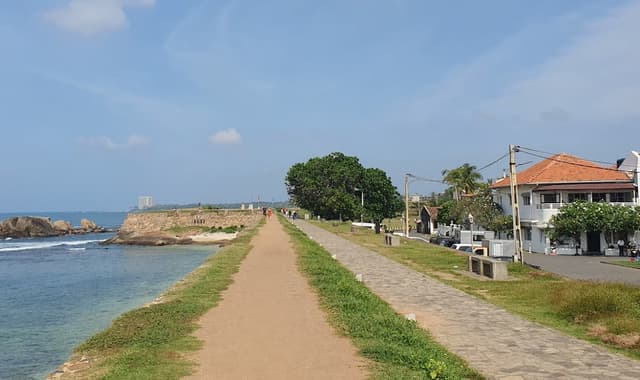
Triton di Slvar Bastion
@ravinkavish
The Triton Di Slvar Bastion, also known as the "Triton Bastion," is another historical feature of Galle Fort, built during the Dutch colonial era in the 17th century. As with other bastions in the fort, it was constructed for defense, designed to protect the fort and its harbor from attacks by sea. The name "Triton" likely refers to the ancient Greek god of the sea, symbolizing the bastion’s strategic position overlooking the ocean.
Though not as well-known as some of the other bastions, Triton Di Slvar Bastion offers visitors a quieter spot to reflect on the fort’s history. From here, you can enjoy panoramic views of the coastline, the bustling harbor, and the surrounding areas. As with other bastions in the fort, it serves as a reminder of Galle’s importance as a maritime hub during colonial times. Exploring the bastion provides insight into the fort's military significance while offering a peaceful place for travelers to appreciate the history and natural beauty of Galle.

Details
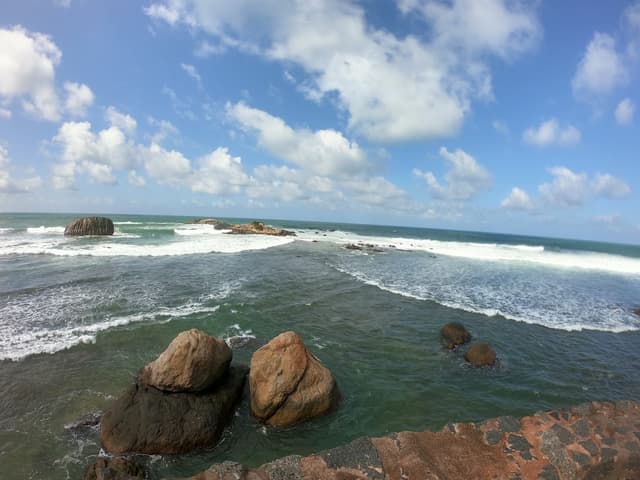
Sunset Watching Point Flagrock Bastion
@ravinkavish
Flagrock Bastion, located within Galle Fort, is one of the most popular spots for watching breathtaking sunsets over the Indian Ocean. Originally constructed by the Dutch in the 17th century as a part of the fort's defense system, Flagrock Bastion was strategically placed to keep watch over the surrounding seas and alert the fort's inhabitants to any approaching threats. The name "Flagrock" refers to the flagpole that once stood here, signaling the presence of ships.
Today, the bastion serves as an excellent viewing point, offering panoramic vistas of the ocean and the coastline. As the sun sets, the sky is painted with vibrant hues, making it a perfect spot for photographers and sunset lovers. The bastion is also a quieter corner of the fort, offering a peaceful place to relax and enjoy the stunning natural beauty of the surroundings.
For travelers exploring Galle Fort, Flagrock Bastion is a must-visit for its historical significance and its incredible view, especially at sunset. It’s a reminder of the fort's strategic military importance, while also offering a serene escape to take in the beauty of the sea and sky.

Details
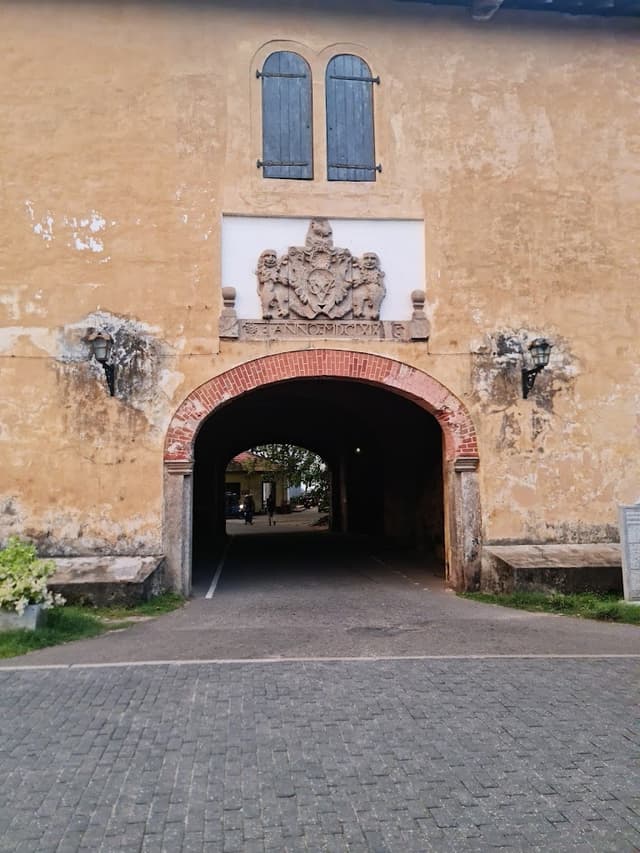
Fort Entrance (Slvar Gate)
@ravinkavish
The Fort Entrance, also known as the **Slvar Gate**, is the main entry point to the historic Galle Fort, serving as a gateway between the vibrant city and the fort’s well-preserved colonial heritage. This grand entrance was originally designed by the Dutch during their occupation in the 17th century to provide access to the fortified town while maintaining security.
The **Slvar Gate** is an architectural gem, with its large archway flanked by sturdy walls, showcasing the strength of the Dutch military engineering. The gate has been a witness to centuries of history, from the Dutch colonial era to the British period and beyond. Visitors can admire the blend of European and local architectural influences, with intricate carvings and stonework that tell the story of Galle Fort's strategic importance as a trading hub and military stronghold.
Today, the Fort Entrance remains an iconic landmark for travelers, marking the transition from the bustling town of Galle to the quieter, more historical atmosphere within the fort’s walls. As you pass through, you'll experience the aura of the past while walking in the footsteps of traders, soldiers, and colonial settlers who once passed through this same entrance. It’s a perfect spot to begin your exploration of the fort’s rich history and fascinating architecture.

Details
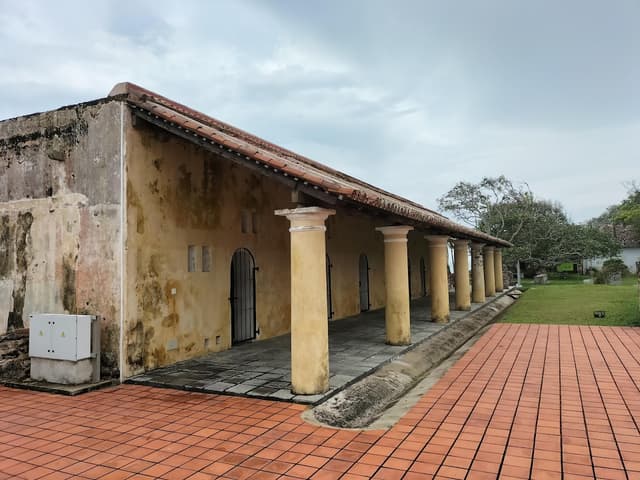
Black Galle Fort - Zwart Bastion
@ravinkavish
Zwart Bastion, also known as the Black Bastion, is one of the key defensive structures in Galle Fort, built by the Dutch in the 17th century. The name "Zwart" translates to "black" in Dutch, which could refer to the darker stone used in its construction or its position as a prominent fortification along the fort's ramparts. Like other bastions in the fort, Zwart Bastion was designed to protect the port of Galle from naval attacks and served as a strategic lookout point.
Today, the Zwart Bastion offers a fascinating insight into the military architecture of the Dutch colonial period. It provides stunning views of the ocean, the Galle harbor, and the surrounding town, making it a great spot for history enthusiasts and travelers looking to appreciate the historical and scenic beauty of the area. The bastion, while not as well-known as some other parts of the fort, remains an integral part of Galle’s fortifications and is a reminder of the town’s strategic importance during the colonial era.

Details
1873 Art Gallery Cafe
@ravinkavish
1873 Art Gallery Cafe, nestled within the historic Galle Fort, is a delightful blend of art and culinary charm. Housed in a colonial-era building, the café offers a cozy ambiance with rustic interiors and a touch of modern elegance. The space doubles as an art gallery, showcasing works by local and international artists, making it a cultural hotspot for visitors.
Whether you’re here to admire the artwork or savor a cup of Sri Lankan tea, the café provides a relaxing retreat amid the bustling fort. Its unique vibe makes it a favorite for travelers looking to unwind and soak in the artistic atmosphere.
**Pro tip:** Pair your visit with a stroll around the fort's galleries and boutiques for a full cultural experience.

Details
National Museum Galle
@ravinkavish
The National Museum of Galle, located within the Galle Fort, is a treasure trove of history and culture, housed in a beautiful Dutch-era building dating back to 1656. This museum provides a fascinating glimpse into Sri Lanka’s past, featuring exhibits that highlight the region's maritime history, colonial influence, and traditional crafts.
Artifacts on display include ancient tools, weaponry, trade goods, and intricately carved wooden objects from the Kandyan era. The museum also showcases items reflecting the blend of cultures that shaped Galle, such as Dutch porcelain and Sri Lankan masks.
**Pro tip:** Visit early to enjoy the museum’s quiet atmosphere and take time to explore the building’s colonial architecture, which is a piece of history itself.

Details

Maritime Museum
@ravinkavish
The Maritime Museum in Galle is a fascinating dive into Sri Lanka’s seafaring history, located within the UNESCO-listed Galle Fort. Housed in a restored colonial warehouse from the 17th century, the museum vividly showcases the island’s maritime heritage, highlighting its connections to trade, exploration, and naval history. It is the only museum in Sri Lanka dedicated solely to maritime culture and history.
Inside, visitors can explore a collection of artifacts, including ancient shipwrecks, navigational equipment, maps, and fishing tools that reflect the maritime activities of the Dutch, Portuguese, and British colonial eras. The museum also highlights the region's rich biodiversity with exhibits on coral reefs and marine life, emphasizing the importance of coastal conservation.
The building itself, with its thick walls and vaulted ceilings, is a testament to Dutch colonial architecture. A visit to the Maritime Museum is perfect for history enthusiasts and curious travelers wanting to uncover the stories of Galle’s port, which was once a bustling hub in the Indian Ocean trade network.

Details
Galle is Not Just The Dutch Fort
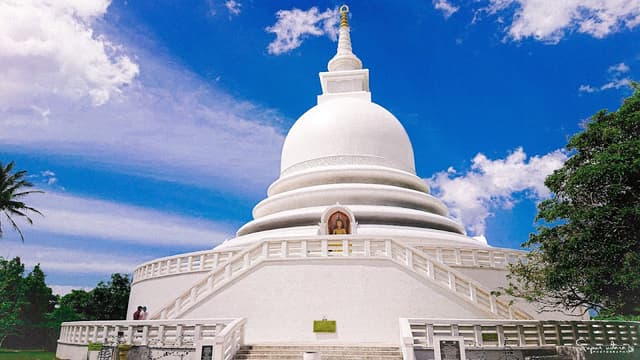
Japanese Peace Pagoda - Rumassala
@ravinkavish
The Japanese Peace Pagoda, located in the tranquil area of Rumassala near Unawatuna, is a stunning landmark that offers both spiritual solace and sweeping views of the Indian Ocean. Built by Japanese monks in 2005, the pagoda stands as a symbol of peace and harmony, reflecting the spirit of Buddhist teachings.
The pagoda's design is simple yet majestic, with its white dome standing out against the lush greenery and the blue ocean backdrop. Visitors can enjoy a peaceful atmosphere, perfect for meditation or simply appreciating the surrounding natural beauty.
**Best time to visit:** The best time to visit the Japanese Peace Pagoda is during the early morning or late afternoon when the weather is cooler, and the views are spectacular. The walk up to the pagoda is short but scenic, making it a great stop for travelers near Unawatuna or Galle.
If you're in the area, the Japanese Peace Pagoda is a serene and culturally rich spot worth experiencing.

Details
Yatagala Raja Maha Viharaya
@ravinkavish
Yatagala Raja Maha Viharaya, a serene Buddhist temple near Unawatuna, is a hidden gem steeped in history. Believed to be over 2,300 years old, this ancient site was built during the Anuradhapura era and is nestled among massive granite boulders, creating a tranquil and unique atmosphere. The temple is said to have once been blessed by a visit from King Devanampiyatissa, tying it to the origins of Buddhism in Sri Lanka.
The temple complex features a stunning reclining Buddha statue, age-old frescoes, and an atmosphere of deep peace. Surrounded by lush greenery, it’s a perfect place for meditation and reflection.
**Pro tip:** Visit early in the morning to enjoy the quiet ambiance, and take some time to admire the panoramic views from the temple grounds.

Details
Pilana Puraana Sri Maha Viharaya
@ravinkavish
Pilana Puraana Sri Maha Viharaya, located in the village of Pilana in the southern part of Sri Lanka, is a tranquil and lesser-known Buddhist temple with a rich history. This sacred site is revered by locals for its spiritual significance and serene environment. The temple is believed to have been established several centuries ago, though detailed historical records are sparse.
The temple complex features a beautiful stupa, statues of the Buddha, and painted murals depicting various Buddhist teachings and the life of the Buddha. Surrounded by lush greenery and peaceful landscapes, it offers visitors a quiet space for meditation and reflection.
**Pro tip:** Pilana Puraana Sri Maha Viharaya is an excellent spot for those looking to experience authentic local culture and spirituality in a peaceful, less touristy setting. The natural surroundings and the temple’s historical charm make it a hidden gem for travelers seeking tranquility.

Details
Hikkaduwa
Hikkaduwa
@ravinkavish
Hikkaduwa, a lively coastal town on Sri Lanka’s southwestern coast, is a hotspot for beach lovers, surfers, and partygoers. Famous for its coral reefs and clear blue waters, Hikkaduwa offers incredible snorkeling and diving opportunities, allowing you to explore vibrant marine life up close.
The town has a laid-back vibe by day, with beachfront cafes and shops lining the golden sands, and a buzzing nightlife scene as the sun sets. Surfers flock to the consistent waves, while others enjoy glass-bottom boat rides or simply relax by the beach. The nearby **Hikkaduwa Coral Sanctuary** is a must-visit for nature enthusiasts.
**Pro tip:** November to April is the best season for water activities. Don't miss the chance to meet the gentle sea turtles that often visit the shore!

Details
Hikkaduwa, a lively beach town on Sri Lanka’s southwest coast, is known for its vibrant coral reefs and laid-back surf vibes. Spend your days snorkeling at the Hikkaduwa Coral Reef, a protected marine park home to colorful fish and sea turtles. The town's main beach is a hotspot for surfers, offering great waves for both beginners and experts.
Apart from its natural beauty, Hikkaduwa has a bustling strip of beachside cafes, bars, and restaurants where you can relax and enjoy the lively atmosphere. For a bit of culture, visit the Hikkaduwa Buddhist Temple. Whether you’re after adventure or relaxation, Hikkaduwa has something for everyone."
Surf Spots:
Narigama Beach
@ravinkavish
Narigama Beach, located just north of Hikkaduwa, offers a more peaceful alternative to its bustling neighbor while still providing a beautiful coastal experience. With its golden sands and clear waters, Narigama is perfect for swimming, surfing, and relaxing by the shore. The beach is less crowded, making it ideal for those looking for a more tranquil setting.
The beach is known for its consistent waves, attracting surfers of all levels, and there are a few local surf schools that cater to beginners. Several beachfront cafes and guesthouses provide a laid-back atmosphere, where you can unwind and enjoy fresh seafood with a view of the ocean.
**Pro tip:** Visit during the early morning or late afternoon for a peaceful, scenic experience, and consider trying your hand at surfing if you’re up for the challenge!

Details
Hot Spots:
Hikkaduwa Coral Reef
@ravinkavish
Hikkaduwa Coral Reef is one of Sri Lanka's most famous and vibrant underwater ecosystems, located just off the coast of Hikkaduwa. It’s home to a dazzling variety of marine life, including colorful fish, sea turtles, and lively coral formations. The reef is easily accessible, making it a popular spot for snorkeling and diving, where visitors can explore the clear waters and get up close to the incredible underwater world.
The reef is also part of the **Hikkaduwa National Park**, offering both marine and coastal protection. In addition to its natural beauty, the area holds cultural significance, with a focus on conservation efforts to protect the delicate reef system.
**Pro tip:** For the best experience, snorkel early in the morning or late afternoon when the water is calm and the visibility is at its peak.

Details
Hikkaduwa Beach
@ravinkavish
Hikkaduwa Beach is a lively and picturesque coastal destination on Sri Lanka’s southwest coast, known for its golden sands, clear blue waters, and vibrant atmosphere. It’s a popular spot for surfing, swimming, and sunbathing, attracting both locals and tourists. The beach is lined with cafes, restaurants, and shops, making it a great place to relax and enjoy fresh seafood while watching the waves.
In addition to the beach, Hikkaduwa offers great opportunities for snorkeling and diving, especially at the nearby **Hikkaduwa Coral Reef**. The laid-back vibe by day turns into a more lively and fun atmosphere at night, with beach bars and live music, perfect for those looking to enjoy the nightlife.
**Pro tip:** If you're into surfing, the waves here are ideal for beginners and intermediate surfers. Also, don’t miss the chance to visit the nearby coral sanctuary!

Details
Dodanduwa Beach
@ravinkavish
Dodanduwa Beach, located just a short drive from Hikkaduwa, is a serene and less-crowded beach offering a more peaceful escape. Known for its calm waters and scenic surroundings, it’s an ideal spot for swimming, relaxing, or simply enjoying the beauty of the coastline without the hustle and bustle of more touristy beaches. The beach is also a great place to take long walks along the shore.
While the beach isn’t as well-known for surfing as nearby Hikkaduwa, it offers a tranquil environment for those looking to unwind. The area has some small beachfront cafes and guesthouses, making it a perfect stop for a quiet day by the sea.
**Pro tip:** Visit in the morning or late afternoon to enjoy the best of the beach’s natural beauty and avoid the midday heat. It’s also a great spot for photography with its picturesque views.

Details
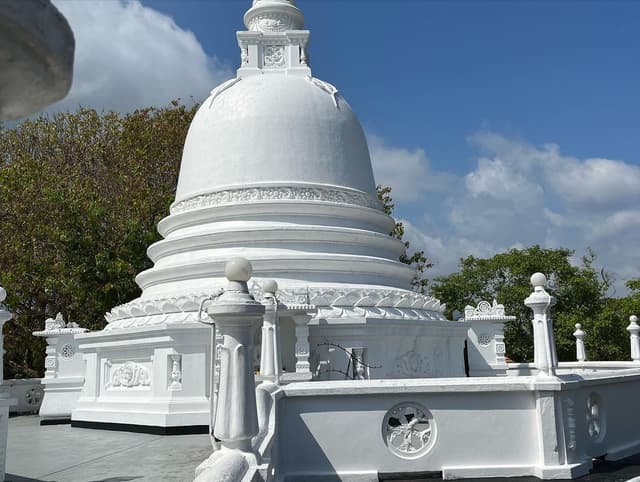
Kumarakanda Kumara Maha Viharaya
@ravinkavish
Kumarakanda Kumara Maha Viharaya, located in the village of Kumarakanda near Hikkaduwa, is a historically significant Buddhist temple with a serene and spiritual atmosphere. This temple is believed to have been established many centuries ago, though its exact origins remain somewhat obscure. The temple is named after Lord Kumara, a reference to the Hindu deity Kartikeya, who is associated with war and protection, highlighting the region's religious diversity. The temple complex is nestled in a peaceful setting, surrounded by lush greenery. It features a stupa, beautifully carved statues, and intricately painted murals depicting scenes from the life of the Buddha. The serene environment makes it an ideal spot for meditation and quiet reflection. **Pro tip:** While visiting, take time to explore the natural beauty around the temple, and enjoy the calmness of the surroundings. It’s a great place to connect with Sri Lanka’s spiritual and cultural heritage.

Details
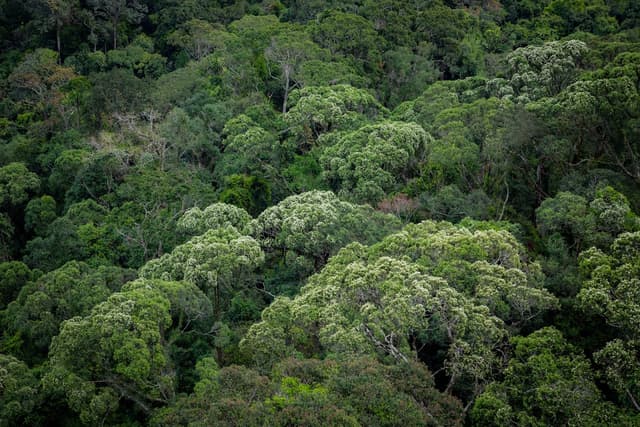
Sinharaja Forest Reserve
@ravinkavish
Sinharaja Forest Reserve, a UNESCO World Heritage Site, is Sri Lanka’s last remaining stretch of tropical rainforest and a biodiversity hotspot. Located in the southwest of the island, this lush reserve is renowned for its incredible variety of flora and fauna, much of which is endemic to Sri Lanka. From towering canopy trees to vibrant orchids and medicinal plants, Sinharaja is a living treasure trove of nature.
For wildlife enthusiasts, the forest offers a chance to spot rare species like the Sri Lankan Blue Magpie, Green-billed Coucal, and Purple-faced Langur. You might also encounter reptiles, butterflies, and an incredible diversity of amphibians and insects. The forest is home to over 147 bird species and numerous mammals, including giant squirrels and small jungle cats.
**History:** Sinharaja, meaning "Lion King," is steeped in folklore and was declared a World Heritage Site in 1988 to protect its unique ecosystem. The forest has played a significant role in local culture and traditional medicine.
**Pro tip:** The best way to explore is through guided treks, which provide insights into the ecology and history of the forest. Early morning visits enhance your chances of spotting wildlife amidst the mist-covered trails. Sinharaja Forest Reserve is a must-visit for nature lovers, offering a serene and immersive escape into Sri Lanka’s rich biodiversity.

Details
Southeast and Northeast Coasts
Best during the June to September season
Arugambay

Details
Surf Spots

Details

Details

Details
Hot Spots

Details

Details

Details

Details

Details

Details
මණිනාගපබ්බත රජ මහා විහාරය | Mani Naga Pabbatha Raja maha Viharaya, Sastrawela, Panama
@ravinkavish

Details

Details

Details
A Wildlife Experience

Details

Details
Batticaloa

Details
Kokkaddicholai Thaanthonreeswarar Temple | கொக்கட்டிச்சோலை தான்தோன்றீச்சரம்
@ravinkavish

Details

Details

Details

Details

Details

Details

Details
Trincomalee

Details

Details

Details

Details

Details
North Dutch Gun Point Bunker
@ravinkavish
Recommended North Dutch Gun Point Bunker, located near Fort Frederick in Trincomalee, is a fascinating spot for history enthusiasts and adventurers alike. This old military bunker, built by the Dutch during their colonial rule in the 17th century, offers a glimpse into Sri Lanka’s past conflicts and strategic military importance. The bunker is perched on a hill with stunning views of Trincomalee’s harbor and the surrounding coastline. It’s a great place to explore if you’re into military history and want to see how the Dutch fortified their position against invaders. The structure itself is rugged and weathered, adding to its historic charm. A walk around the bunker lets you imagine the strategic importance it once held and offers fantastic photo opportunities of the panoramic ocean views. It’s a bit off the beaten path, making it a perfect spot for those looking to combine a bit of historical exploration with a scenic adventure.

Details

Details

Details

Details

Details

Details

Details

Details

Details

Details

Details
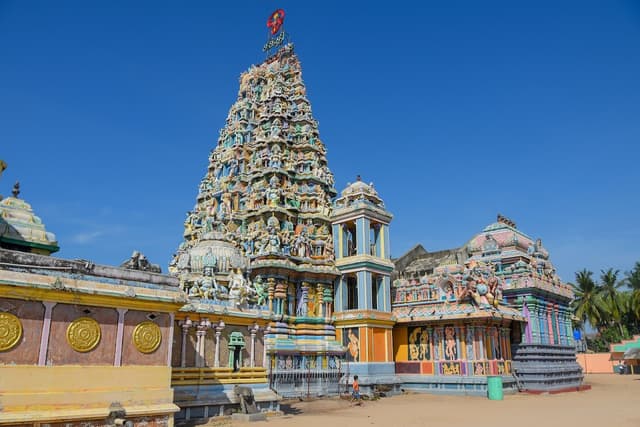
Shri Badrakali Amman Hindu kovil
@ravinkavish
Must Visit Shri Badrakali Amman Hindu Kovil in Trincomalee is a captivating stop for travelers seeking a dose of local culture and spirituality. This vibrant Hindu temple is dedicated to the goddess Kali, known for her fierce and protective qualities. The temple's standout feature is its stunning, intricately carved façade, adorned with colorful statues and detailed artwork. As you explore, you’ll be struck by the vivid colors and elaborate designs that bring the temple to life. Inside, the atmosphere is both lively and serene. The temple is a hub of activity during festivals, with traditional ceremonies and offerings adding to the energetic vibe. It’s a great place to witness local religious practices and immerse yourself in the community’s spiritual life. Set against a backdrop of lush greenery, Shri Badrakali Amman Kovil offers a peaceful retreat where you can experience a rich blend of history, culture, and devotion. It’s a fantastic spot to soak in the local flavor and appreciate the artistic beauty of the temple.

Details

Details
Sangamiththa Viharaya/Temple
@ravinkavish
Optional Sangamiththa Viharaya in Trincomalee is a lesser-known but intriguing temple that’s worth a visit for its peaceful atmosphere and historical significance. The temple is dedicated to Sanghamitta Theri, a prominent Buddhist figure who played a key role in the spread of Buddhism to Sri Lanka. The site is surrounded by lush greenery, creating a serene setting that’s perfect for a tranquil retreat from the city. Highlights of the temple include its simple yet elegant design, with a blend of traditional Sri Lankan and Indian architectural elements. The temple’s calm environment and historical background offer a unique opportunity to connect with Sri Lanka’s Buddhist heritage in a quiet, reflective setting. Visiting Sangamiththa Viharaya provides a glimpse into the region's spiritual history and a chance to experience a peaceful spot off the beaten path.

Details
Kalpitiya

Details

Details

Details

Details

Details

Details

Details

Details

Details
Kiteschule Kalpitiya Srilanka - Wing Foiling School - De Silva Beach Hut
@ravinkavish

Details
Kandakuliya Beach ( Kudawa ), කන්දකුලිය මුහුද ( කුඩාව ), கண்டல்குழி கடற்கரை ( குடா )
@ravinkavish

Details

Details

Details

Details

Details

Details
JAMMIUTH THAQWA JUMMA MASJID (Pattani Sahib Mosque)
@ravinkavish

Details

Details

Details

Details

Details
Nuraicholai Casuarina Beach , சவுக்கு தோட்டம் KasaKale
@ravinkavish

Details

Details
Wilpattu National Park
@ravinkavish
Wilpattu National Park is Sri Lanka’s largest and one of the oldest national parks, famous for its dense jungles, “willus” (natural lakes), and incredible wildlife diversity. If you're up for adventure, Wilpattu is your spot for spotting leopards, who thrive here due to the park’s low human presence. Elephants roam freely, and the park is also home to sloth bears, crocodiles, and a variety of colorful bird species like peacocks and storks.
Pro tip: Mornings or late afternoons offer the best chances for wildlife sightings, as animals are more active then. The park feels like a true wilderness, with a rustic vibe that’s unique compared to more frequented national parks in Sri Lanka. Bring binoculars and a camera—you might be lucky enough to spot a leopard lounging near one of the lakes or catch elephants bathing in a natural pool!

Details
Getting Around
Call Your Taxi
Call a taxi? Make sure to use **Uber** or **PickMe** again! It’s always a good idea to confirm the price beforehand. Interestingly, an Uber car can sometimes be cheaper than the fare quoted by a local tuk-tuk driver. So, always know the fair price and agree before you hop in!
Check Your Train Schedule
Use the RDMNS.LK mobile app to check train schedules. It’s pretty accurate most of the time, but always double-check with a local, an officer, or another traveler at the station to confirm the right platform(especially in major hubs like Colombo) and train arrival time.
Train Tickets at the Station Ticket Counter
If you buy your train ticket at the counter, make sure to purchase a 2nd Class ticket but a seat is not promised. Seat reservation is usually not available at the counter. Avoid 3rd Class tickets since 3rd class compartments are usually way too crowded especially during peak hours.
Train Tickets Online
1st class Train tickets are usually available only online. There are different compartments of the train for online reservations, available in 1st, 2nd class and 3rd as well. Your seat is always promised.
Book your tickets at least 1 or 2 weeks prior to your trip if you want a seat.
Bus Rides
Avoid Peak Hours Unless You Reserved Online
Day time (**9am - 3pm**) and weekend trains and buses are less crowded but avoid **peak hours (7am - 9am towards Colombo, Kandy & 4pm-8pm away from Colombo, Kandy**) unless you have booked your seat online or want to enjoy standing the whole journey or half! Test your luck!
Important Websites for Reservations
More Tips for Solo Travelers:
This Guide Includes:
Best Seasons
Entry Requirement
What to Bring
Local Currency and Money Tips
Accommodation Option
Transportation Methods
Internet and SIM Card
Health and Safety Tips
Emergency Contacts and Safety Tips
* * *
